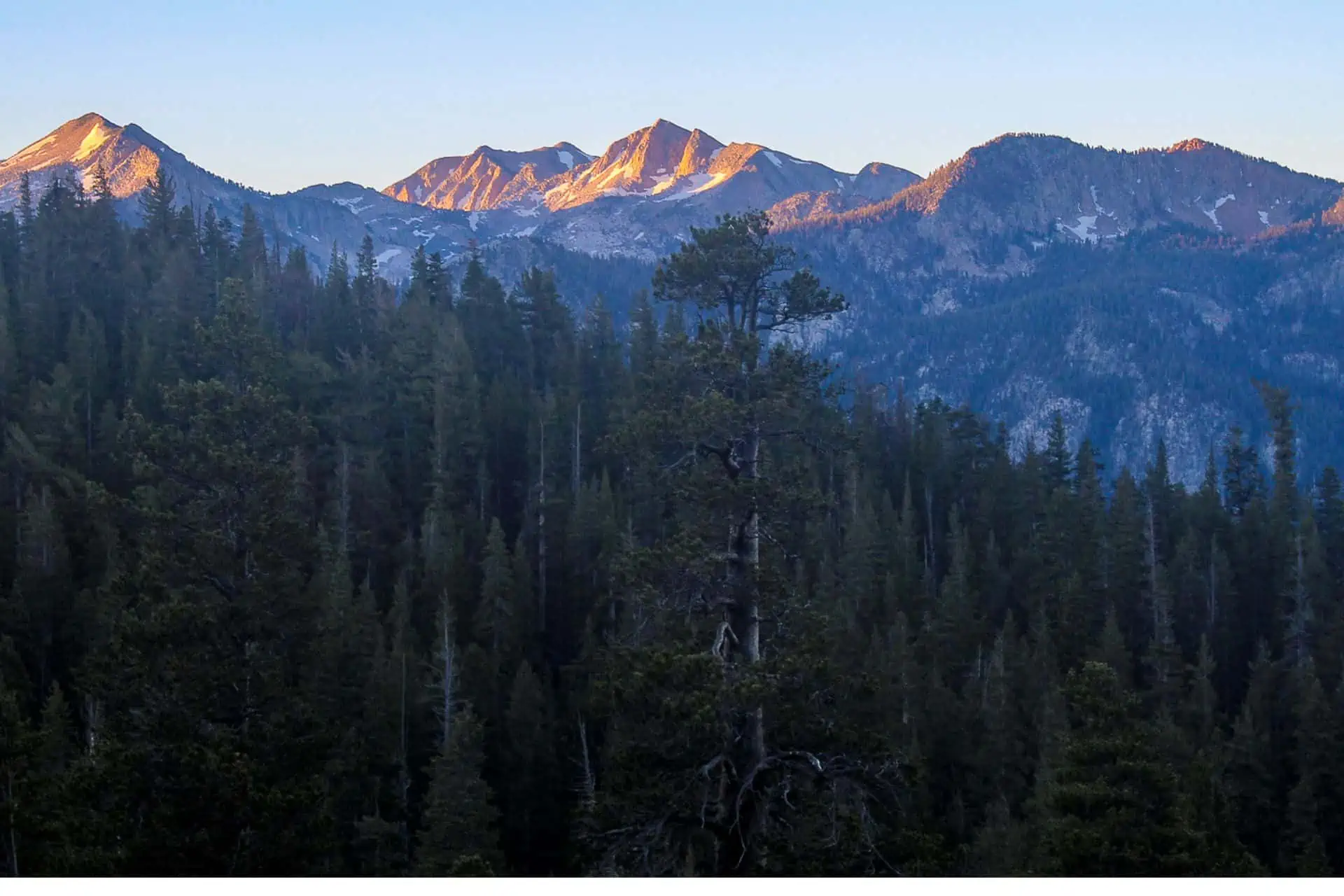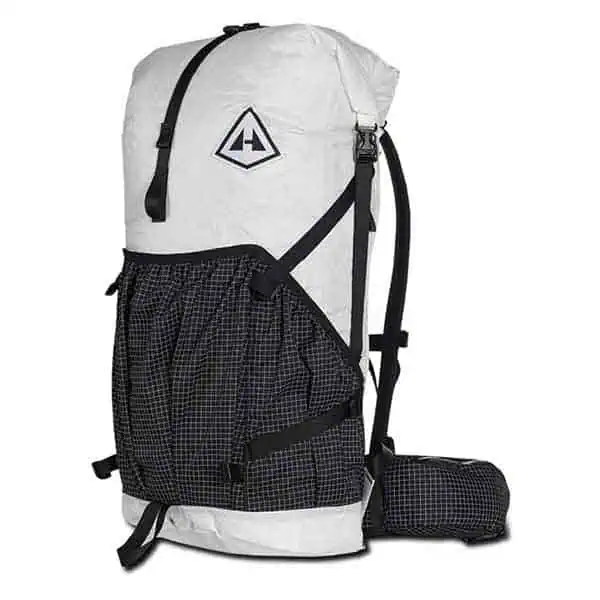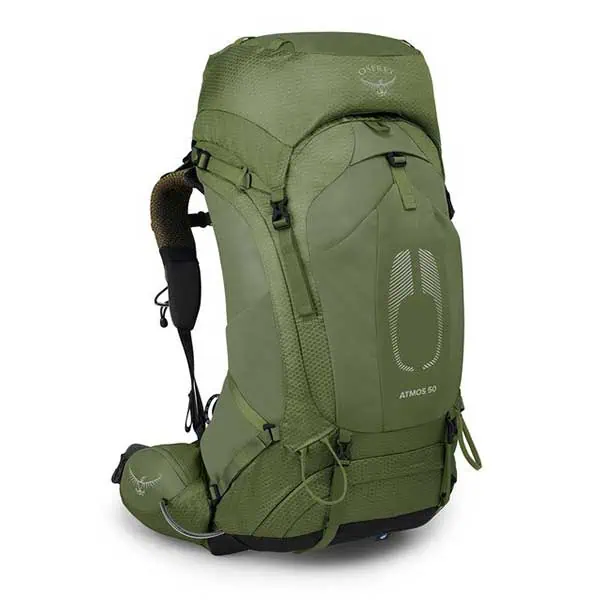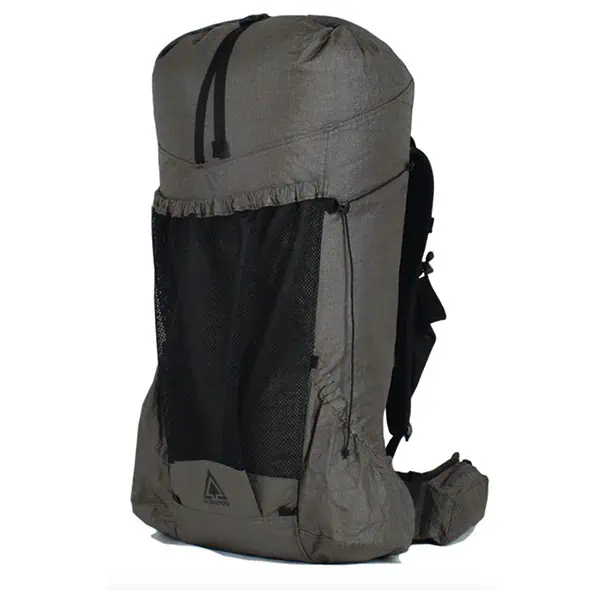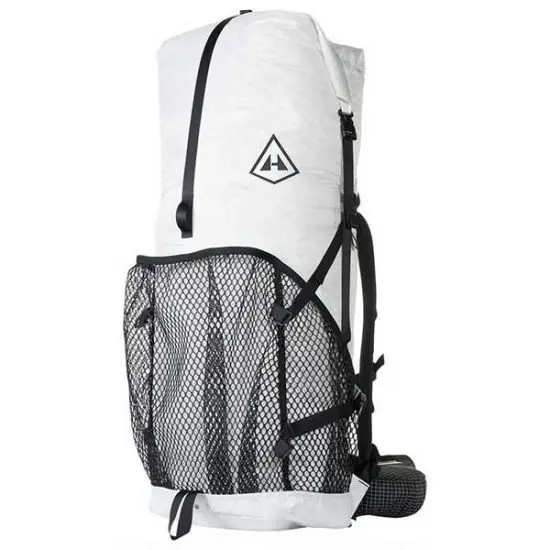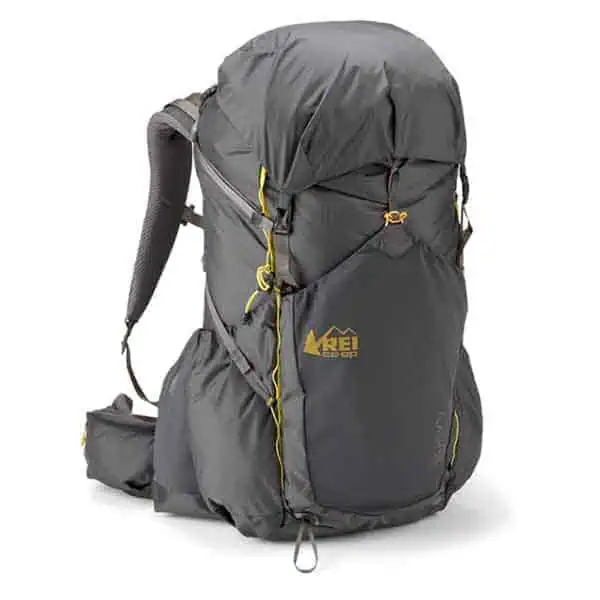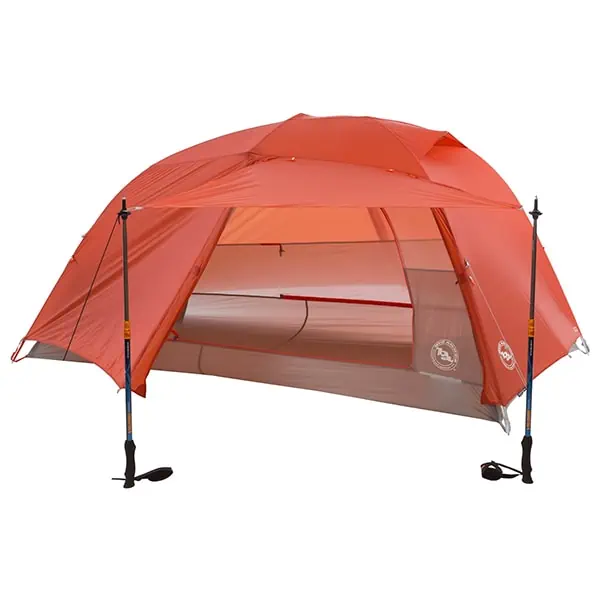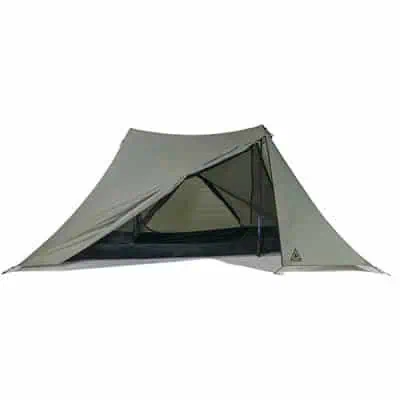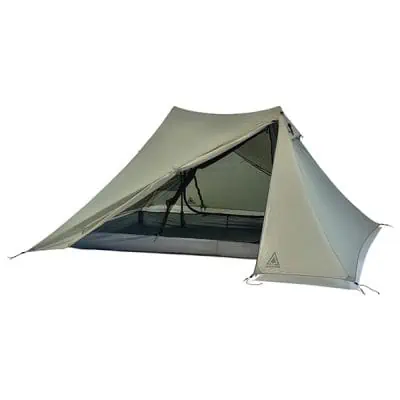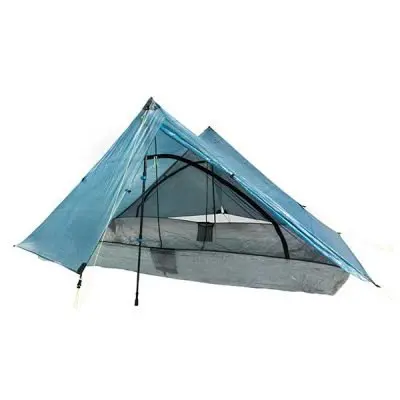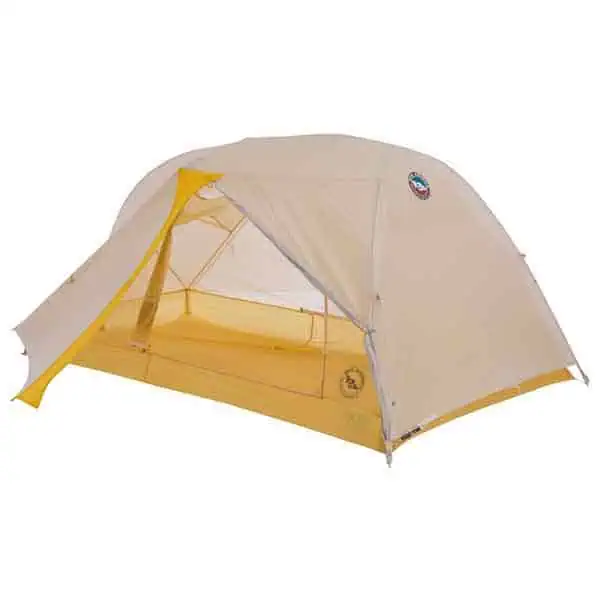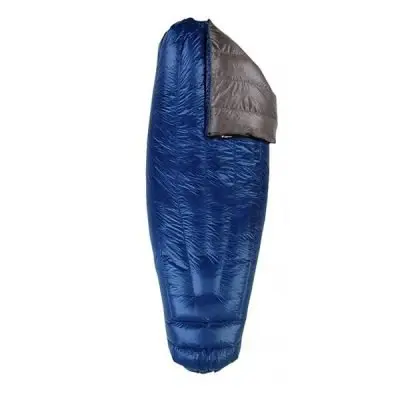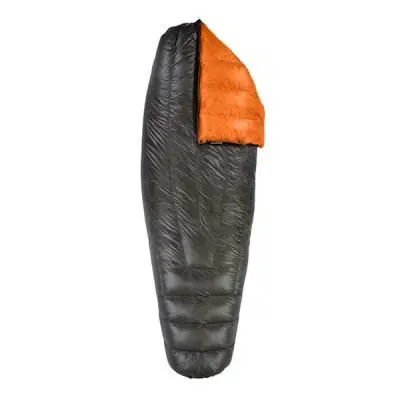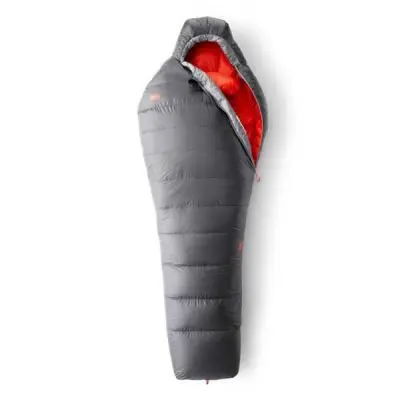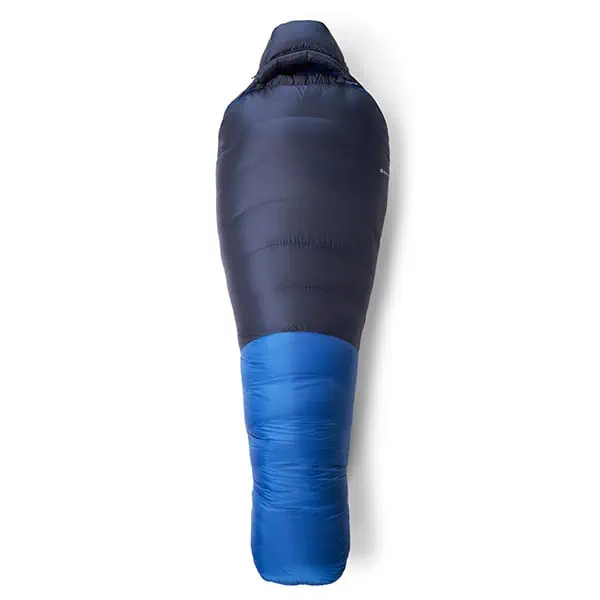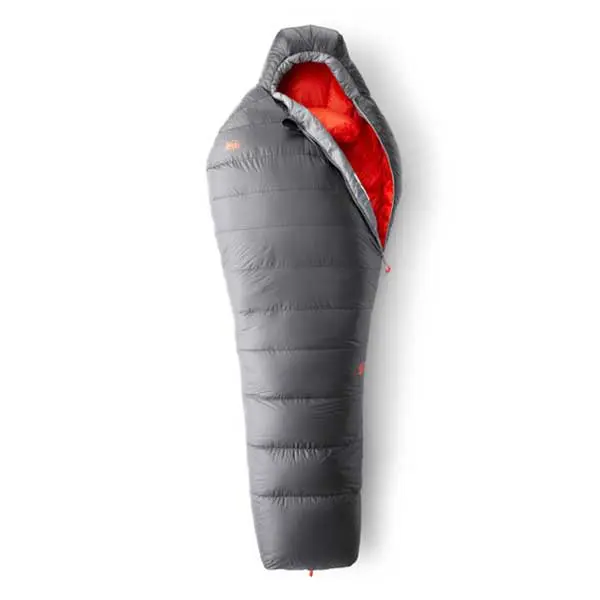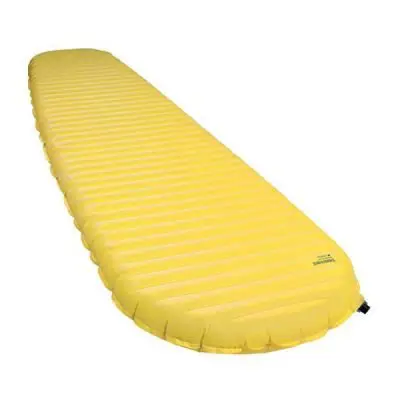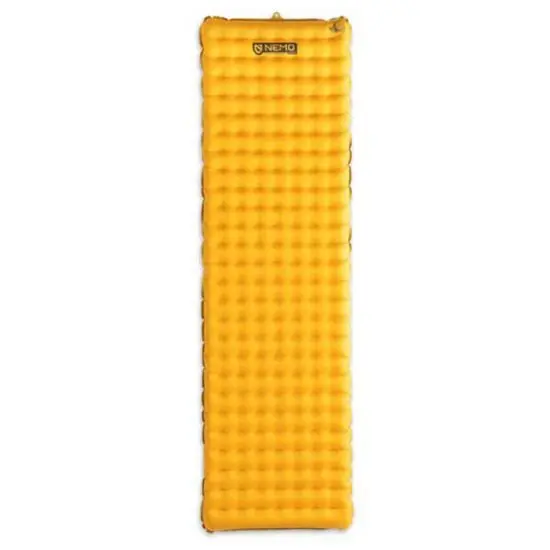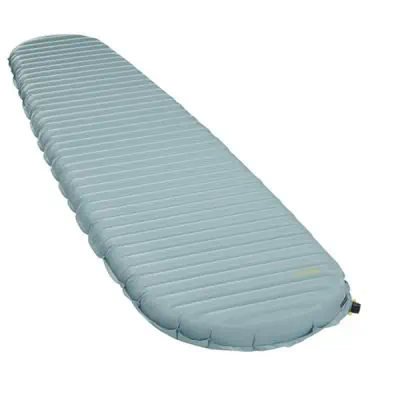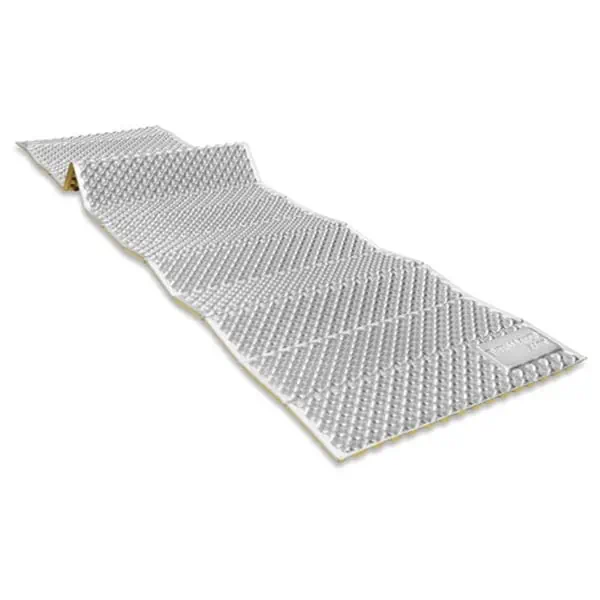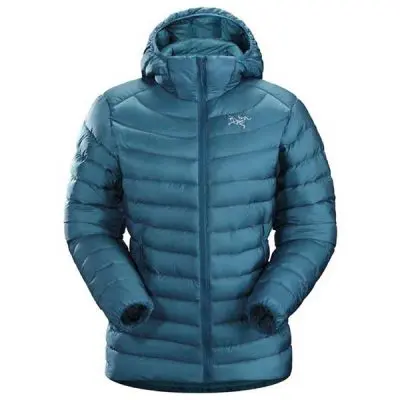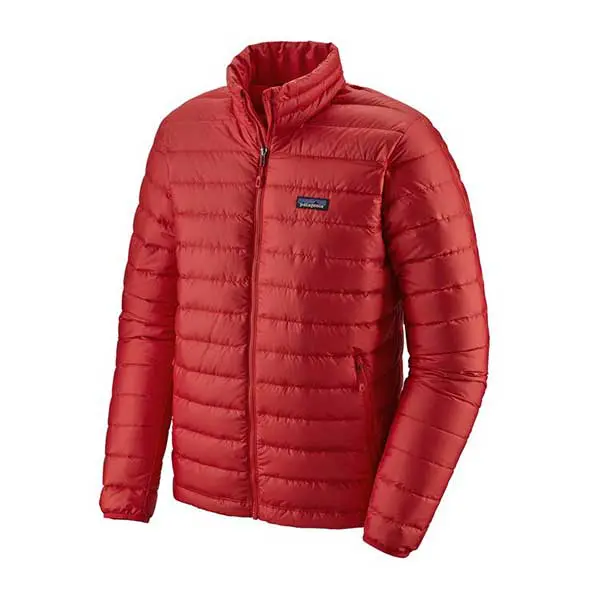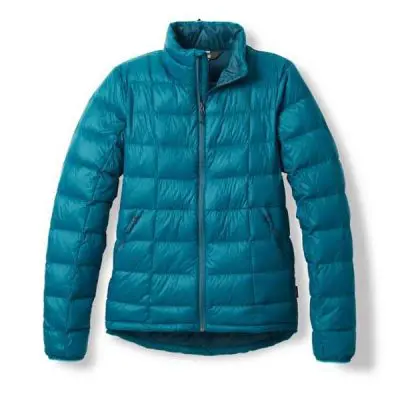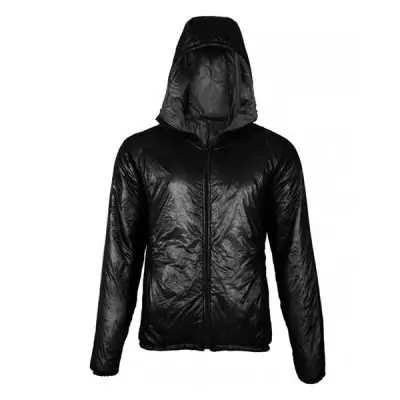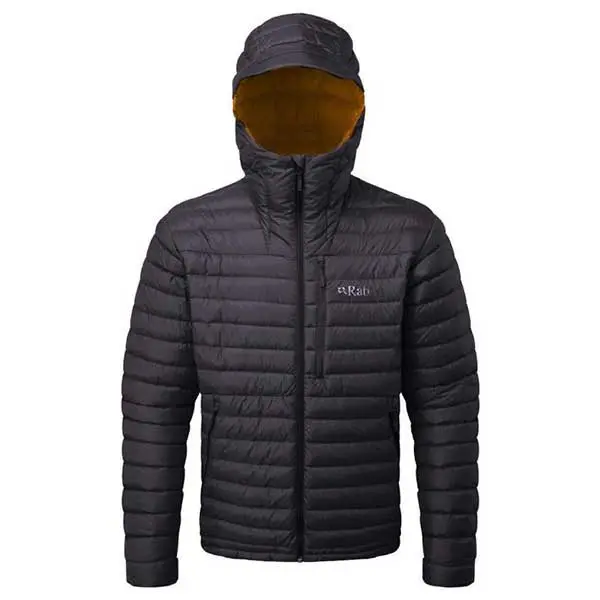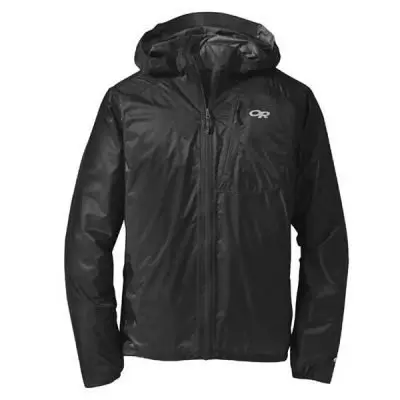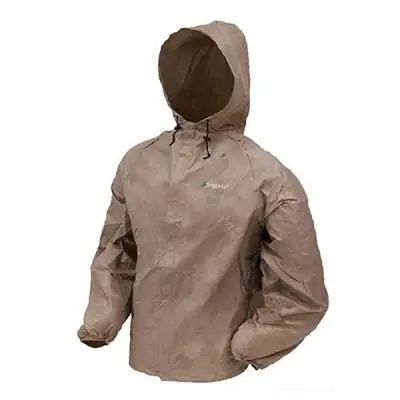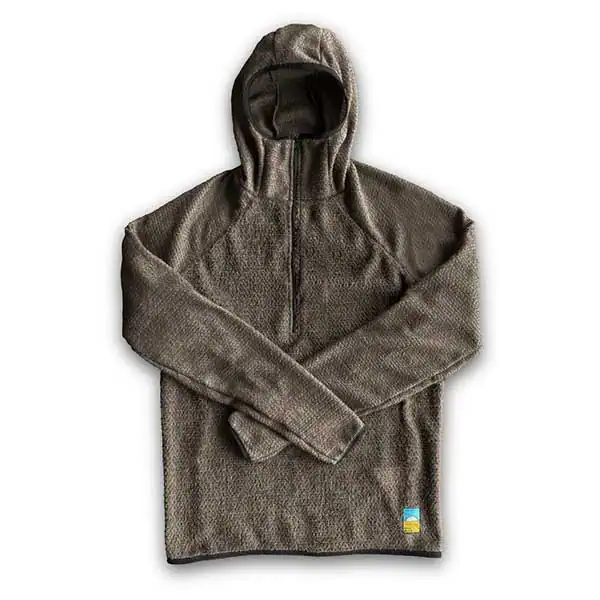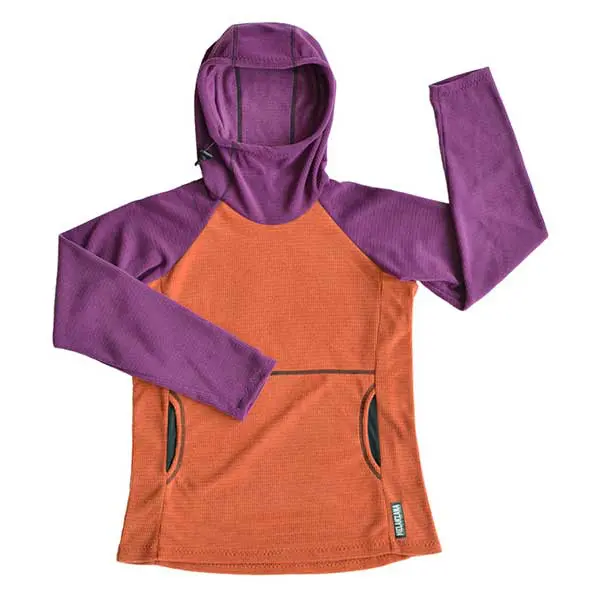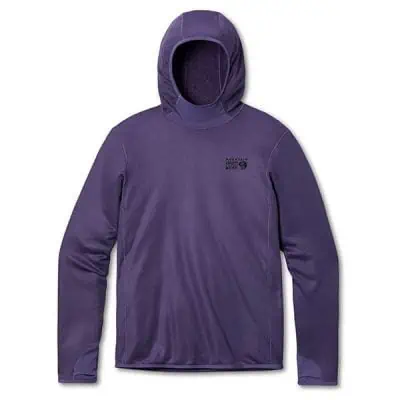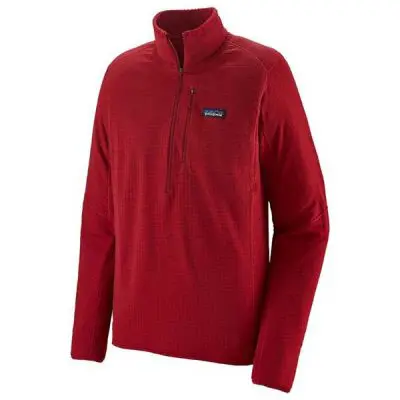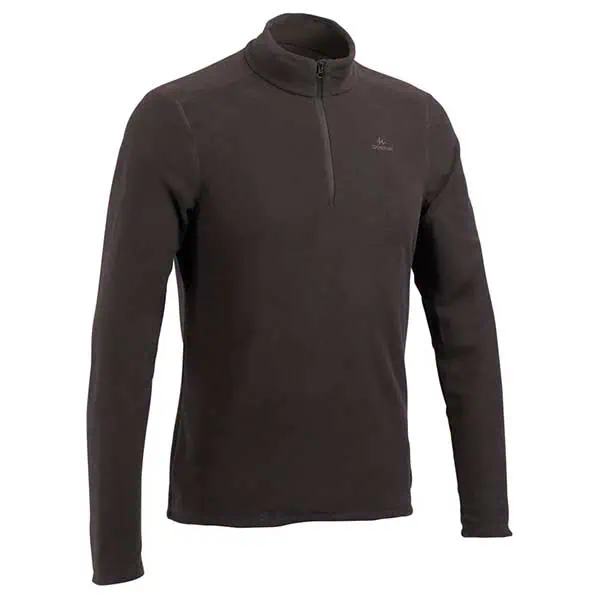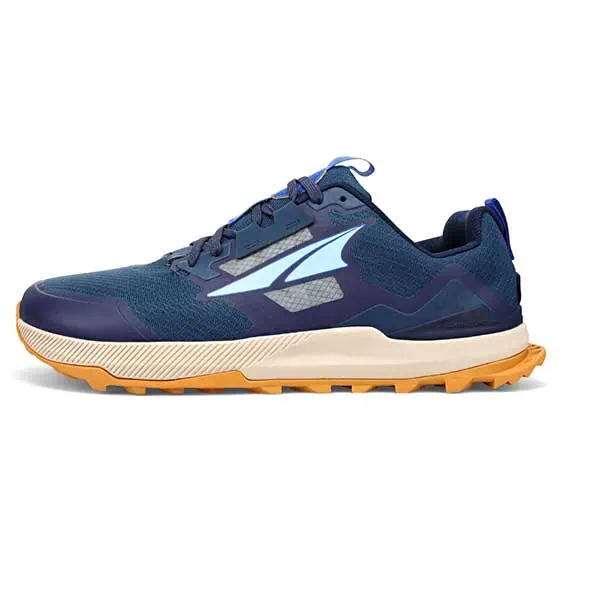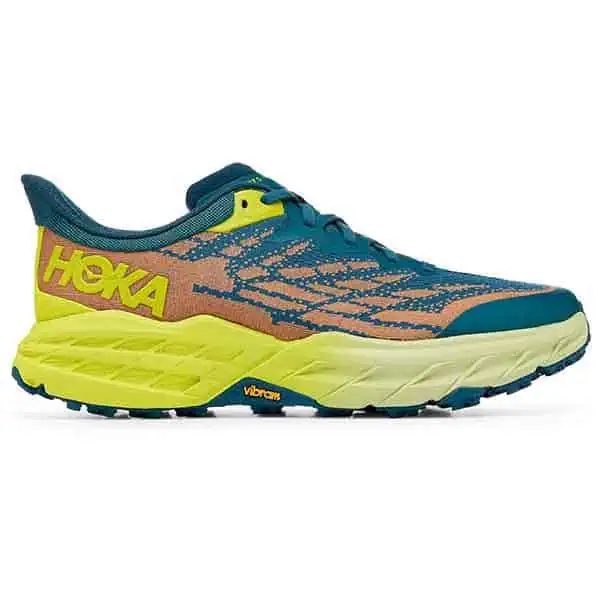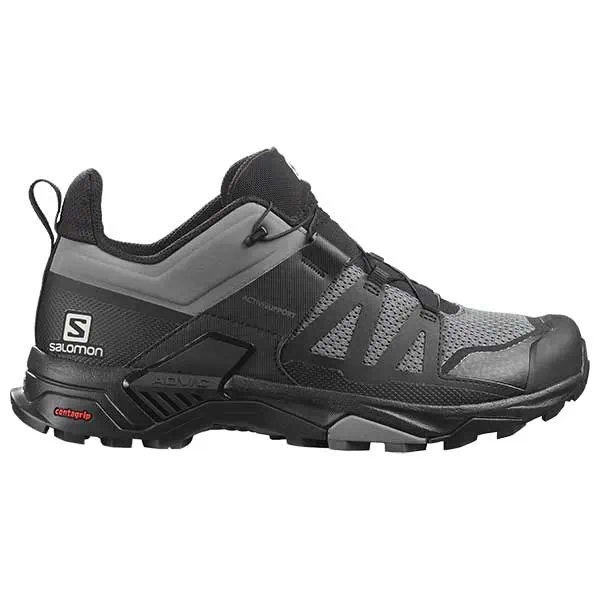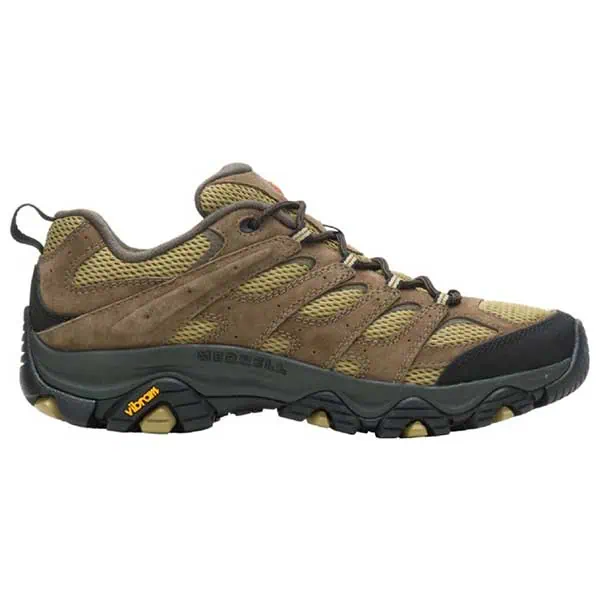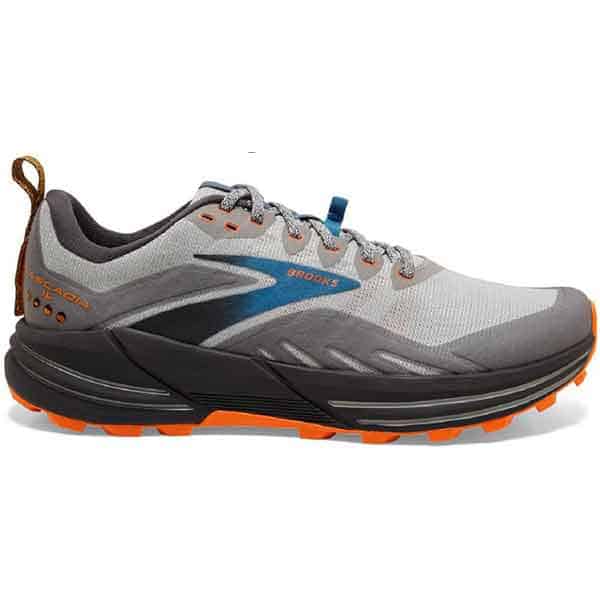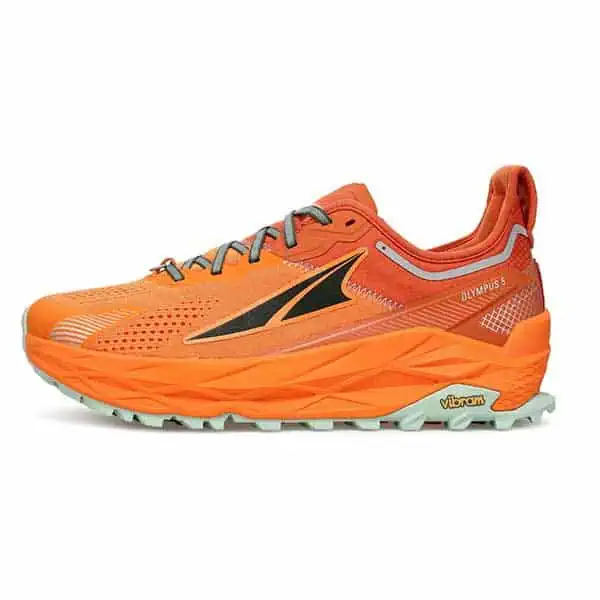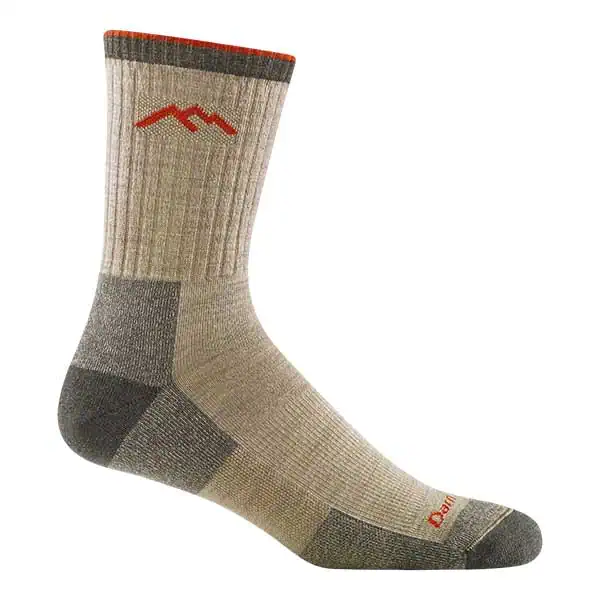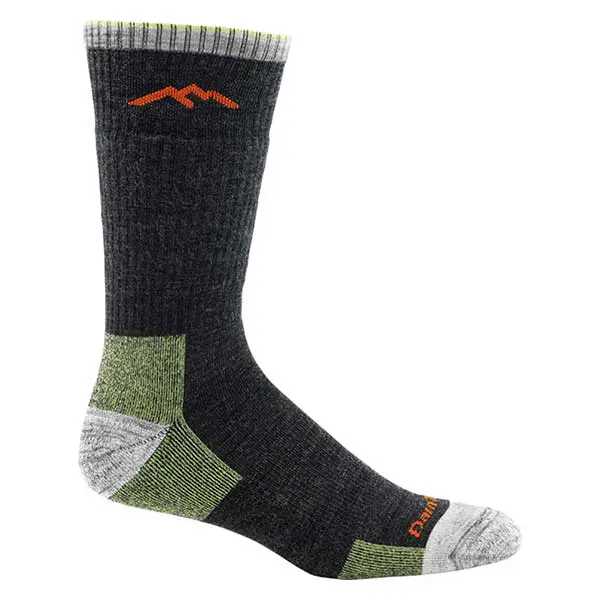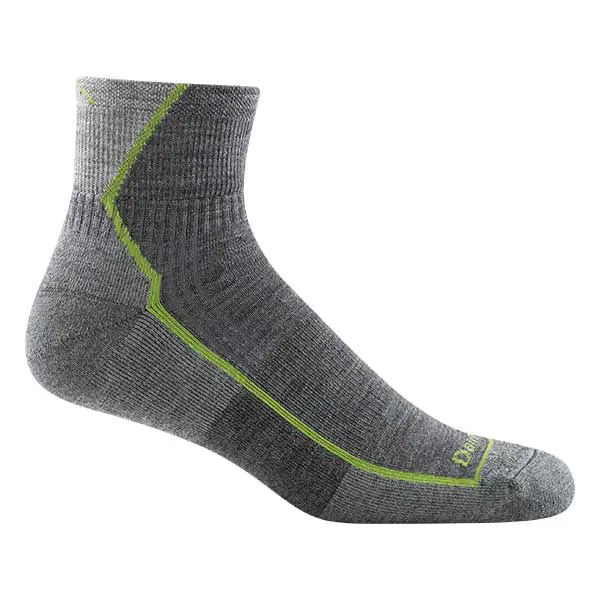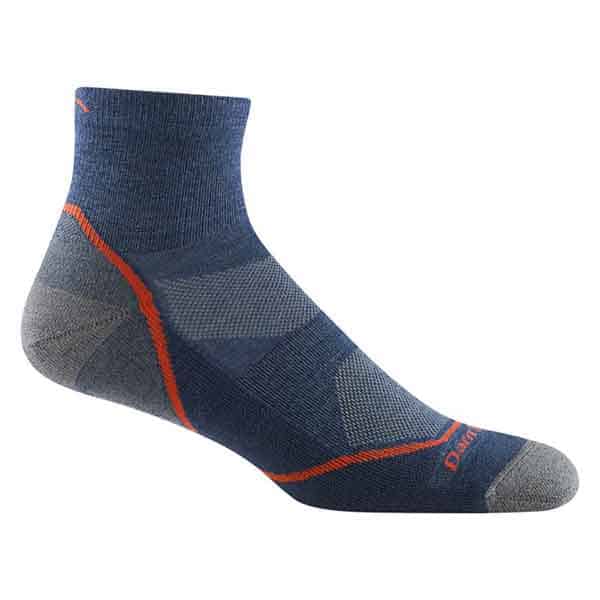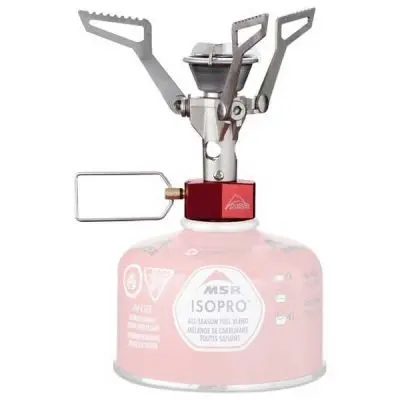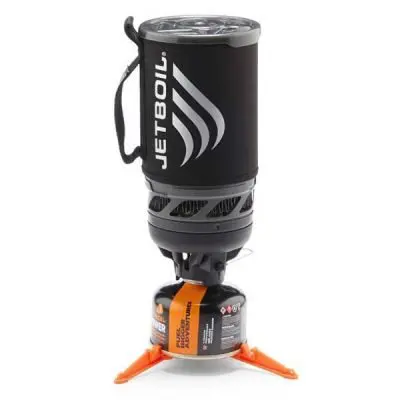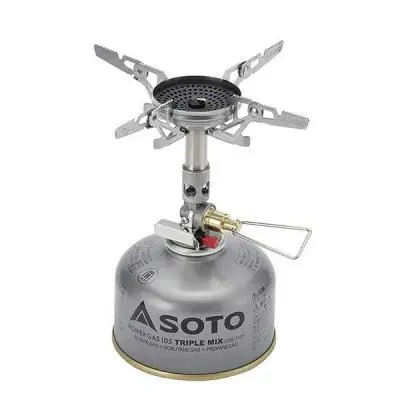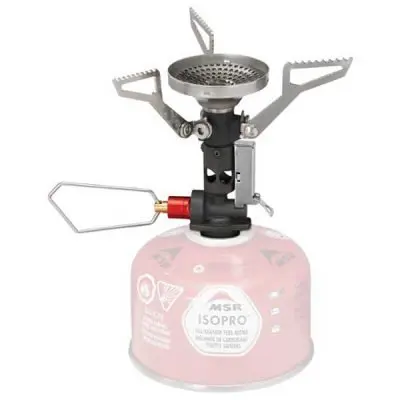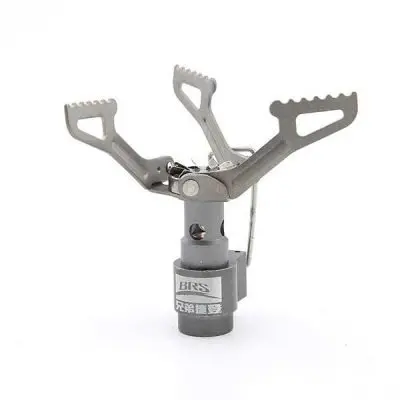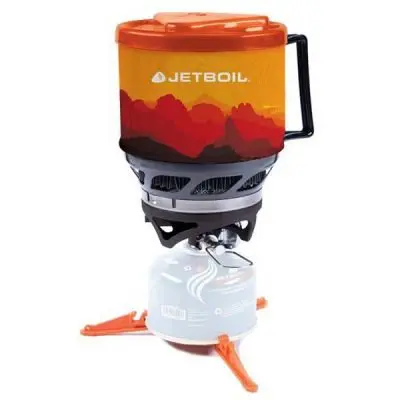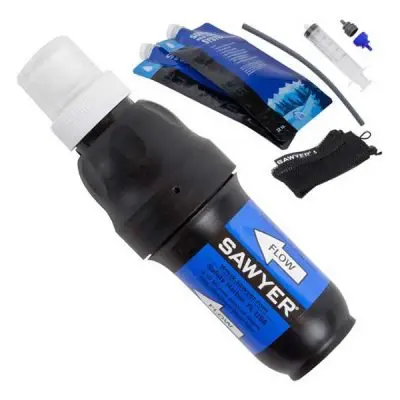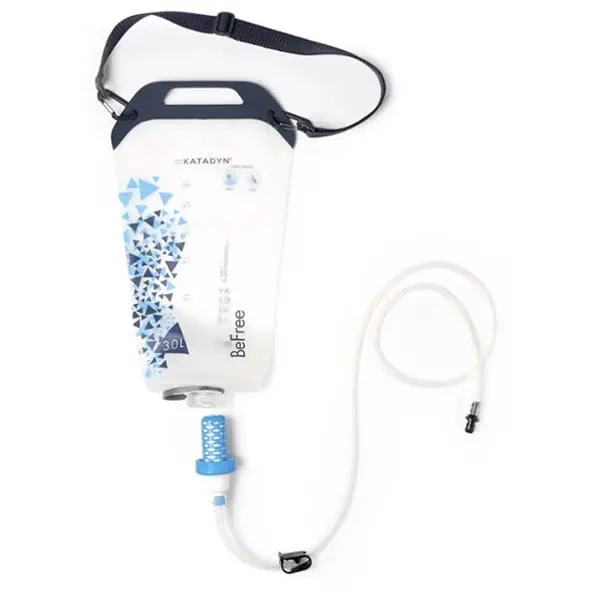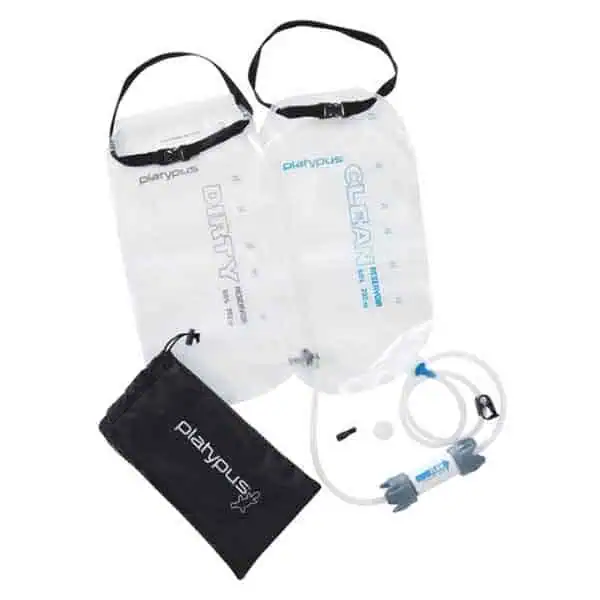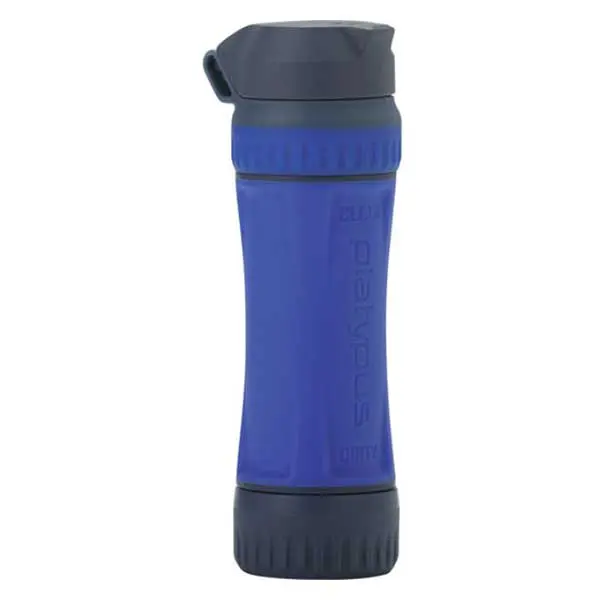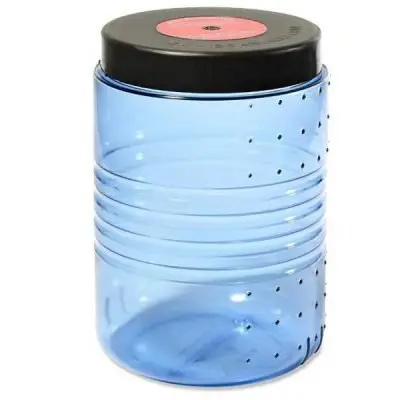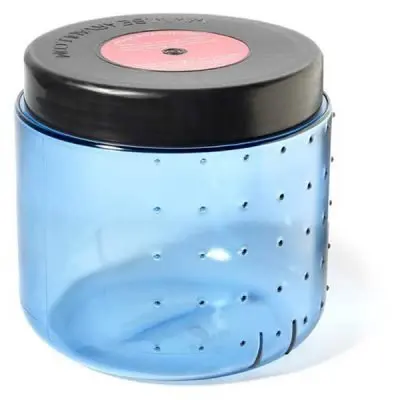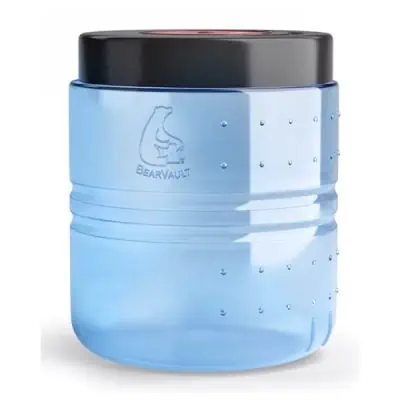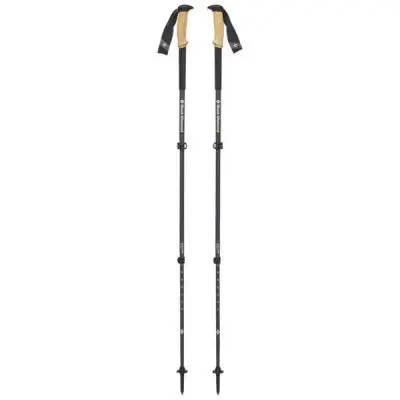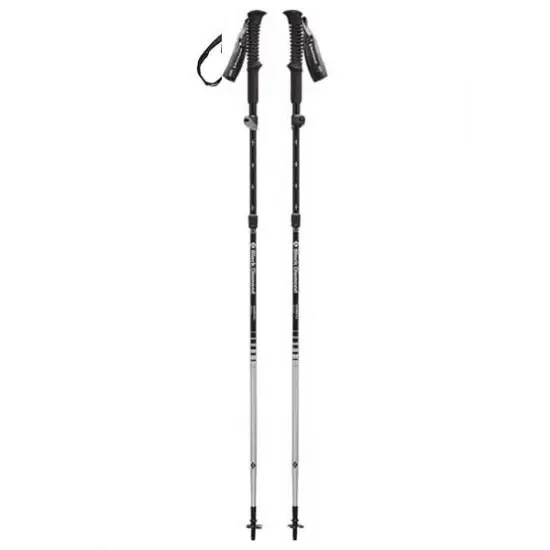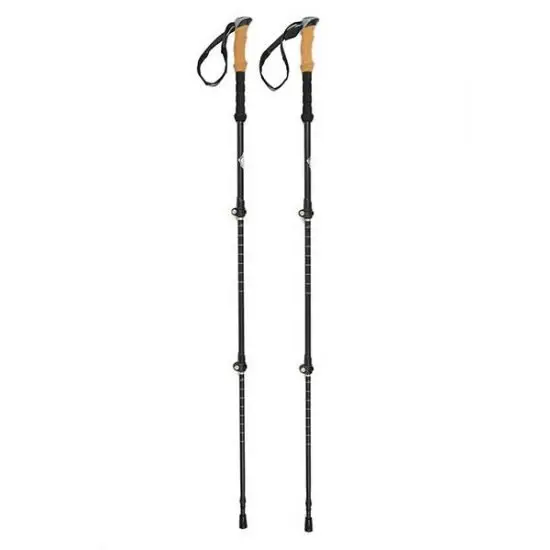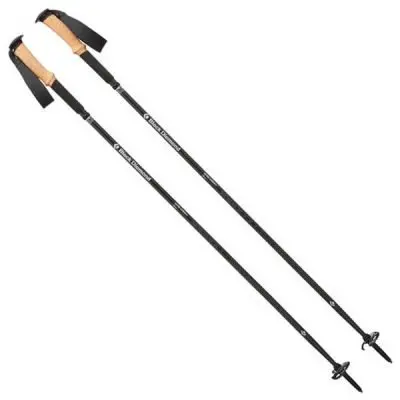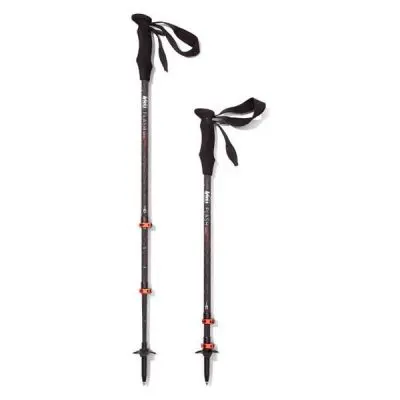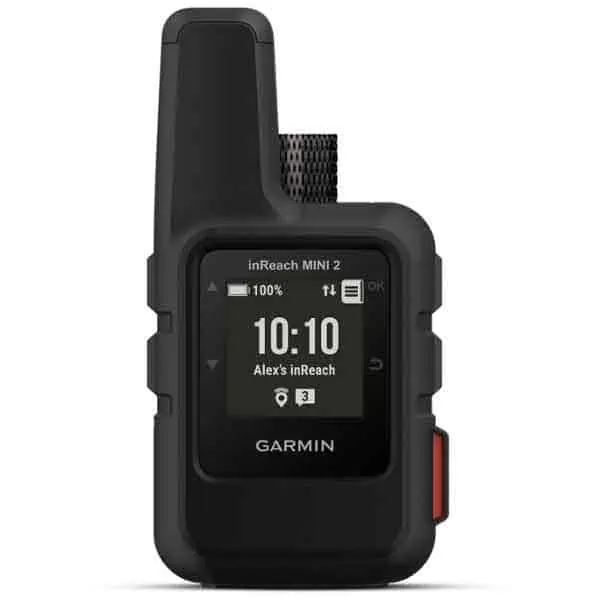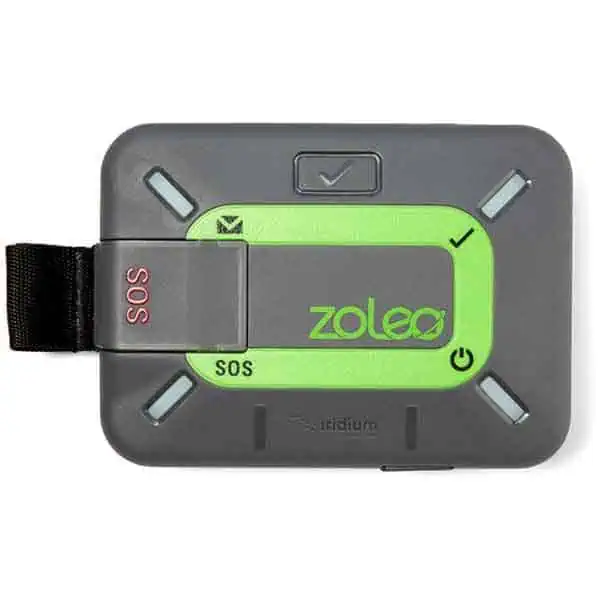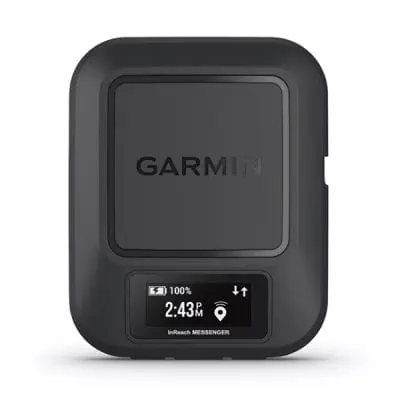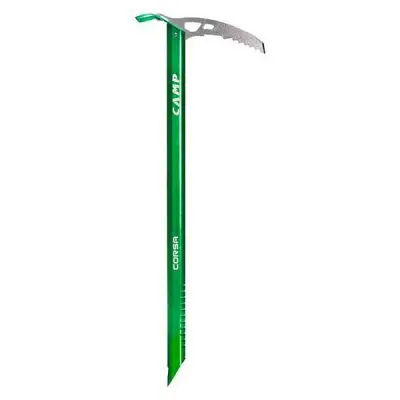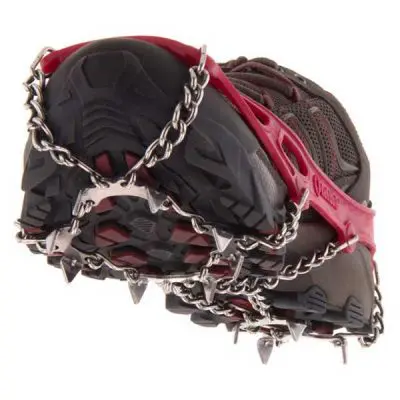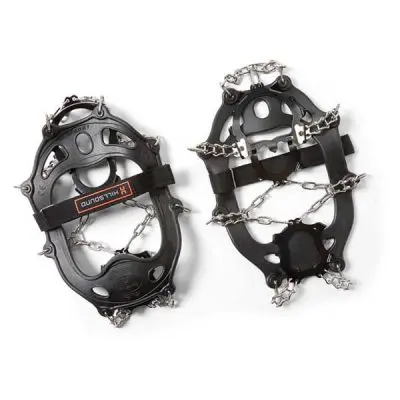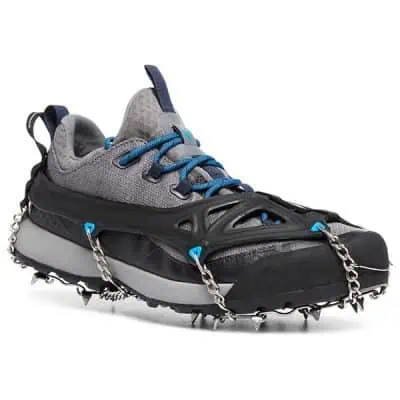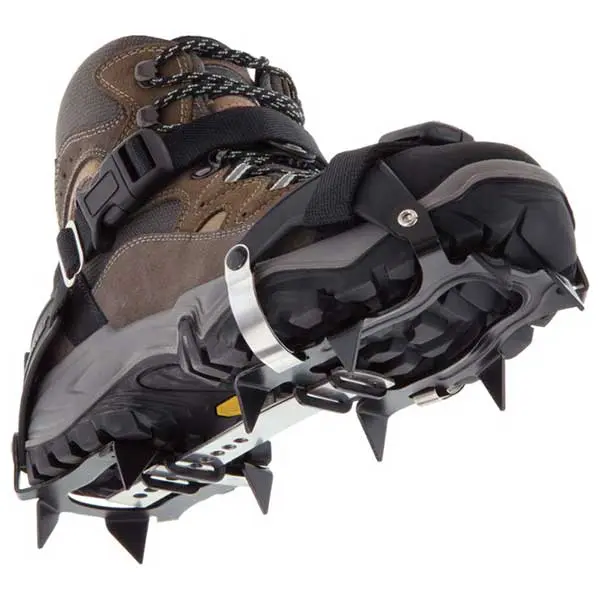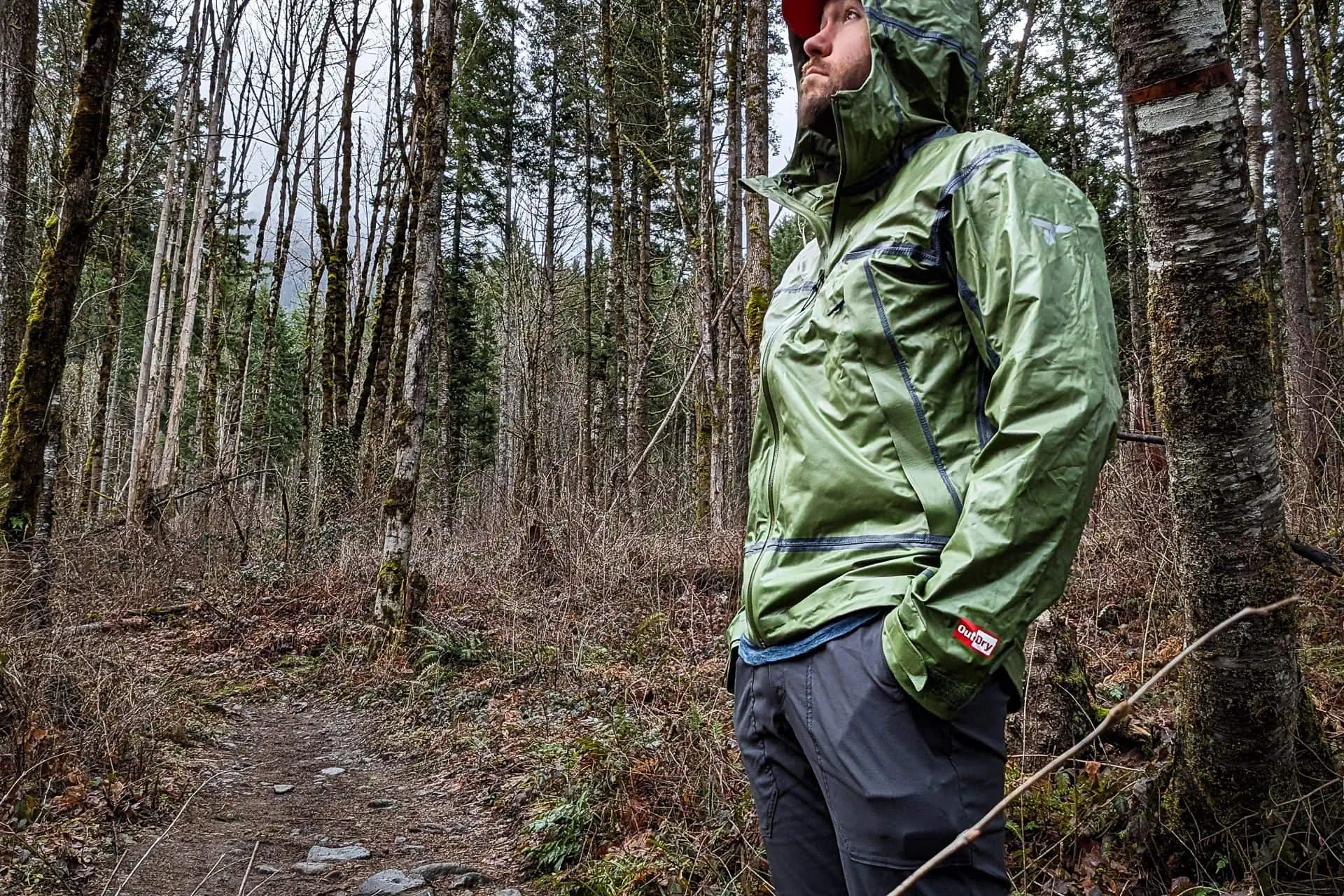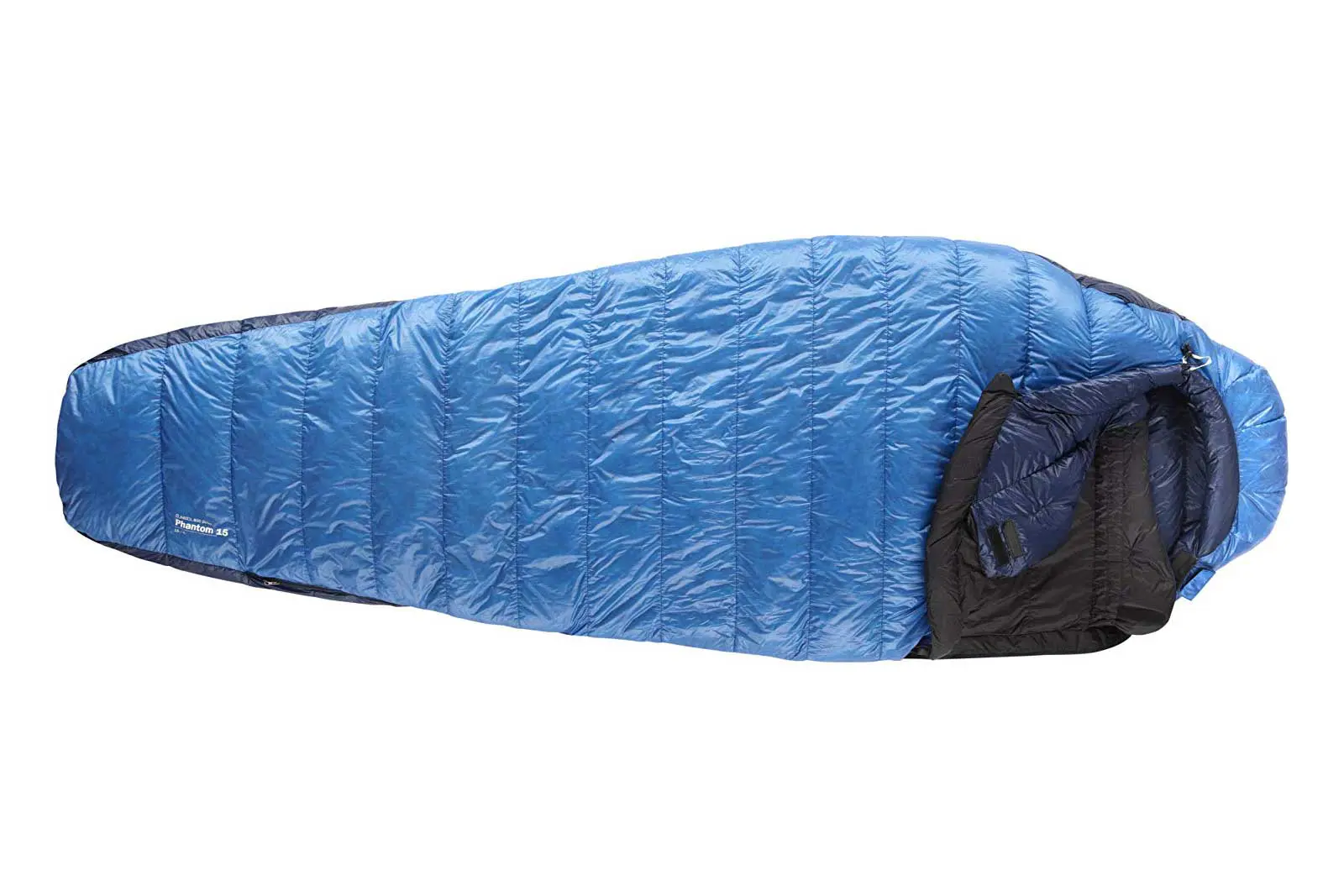The John Muir Trail Gear Guide (2023 Survey)
In the second installment of this year’s John Muir Trail Hiker Survey, we dive into gear for hiking the JMT. John Muir Trail gear lists vary wildly between hikers, and (spoiler alert) finding a perfect JMT gear list is impossible. That said, we can try.
I’ve organized this in a way that I hope will give a comprehensive picture of the gear JMT hikers use. This post covers the highest-rated gear, the most common gear, base weights, gear advice, and more.
The gear covered here includes backpacks, shelters, sleeping bags, sleeping pads, insulated jackets, rain jackets, fleeces, shoes, socks, stoves, water treatment, trekking poles, ice axes, traction systems, bear canisters, satellite messengers/PLBs, luxury items, and more.
The goal is for this to be a useful resource for JMT hikers, so if there’s anything you think is missing, please leave a comment below. Now for this year’s John Muir Trail Gear Guide by the JMT Class of 2023.

Notes on the Data
- There were 264 completed surveys. Sign up for the survey here if you’re hiking the John Muir Trail next year.
- Some responses have been sorted and colored (e.g., northbound vs. southbound responses).
- I ask that respondents do their best to respond accurately. Not everyone answers every question, and not every answer is 100% accurate (e.g., someone may mistakenly report their longest day of hiking was 21 miles instead of 18 miles).
- I refer to respondents collectively as the year’s “class.” Remember, this is a sample, not a comprehensive survey of every JMT hiker.
- For stats requiring the length of the John Muir Trail for a calculation (e.g., average mileage per day for the trail), I use 215.8 mi / 347.3 km. This is the distance, according to FarOut (which I recommend).
- I will release more detailed posts focused on JMT Resupply, JMT Demographics, JMT Horror Stories, and JMT Advice. To be notified of new posts, click here.
Notes on the Gear
- Backpacks: For weights/stats, I use capacities closest to 55 liters (if multiple options are available) based on this year’s average of 56.8 liters.
- Backpacks: Where it makes sense (e.g., for the most popular pack), men’s and women’s versions of the same pack, such as the Osprey Exos and the Osprey Eja, have been combined into a single pack.
- Backpacks: The Hyperlite Mountain Gear Southwest, Windrider, and Junction are all the same backpack but with different exterior pocket material combinations. These packs have been combined into a single pack where it makes sense.
- Sleeping bags and quilts: For weights/stats, I use the highest fill power available and the temperature rating closest to 20°F/-6°C (if multiple options are available) based on this year’s average of 17.7°F/-7.9°C.
- Sleeping pads: Therm-a-Rest has released a new version of their sleeping pads, the NXT line, since the last survey. The women’s version of the XLite has been discontinued and rolled into the new version. Therm-a-Rest sleeping pad models have been combined where it makes sense to do so. I’ve also stopped treating the short versions of the pads as different products. The pads’ MAX (i.e., rectangular versions) are still treated as separate.
- Insulated jackets: I’ve left the jacket and hoodie/hoody versions of jackets separate for now, but I am considering combining them in future years. If you have any thoughts on this, please let me know.
- Ice axes: For weights/stats, I use the length closest to 60 cm (if multiple options are available). There was insufficient data to assign any ice axe a rating.
- Highest-rated gear: Only gear used and rated by at least ten hikers is assigned an average rating. If a piece of gear does not have a rating, it was used and/or rated by fewer than ten hikers.
- All ratings listed are the average (on a scale of 1 to 10) from each hiker who rated the gear.
Most Common JMT Gear
I asked each survey respondent about the gear they used during their John Muir Trail hike. With this information, we can see the most popular gear on the trail.
Here’s what this year’s “Most Common JMT Gear List” backpack had (and what that theoretical backpack was).
- Backpack: Osprey Exos/Eja (2.84 lb / 1.288 kg)
- Shelter: Big Agnes Copper Spur HV UL2 (2.69 lb / 1.22 kg)
- Sleeping bag: Enlightened Equipment Revelation (19.18 oz / 544 g)
- Sleeping pad: Therm-a-Rest NeoAir XLite NXT (13 oz / 369 g)
- Insulated jacket: Enlightened Equipment Torrid – Men’s/Women’s (8.4 oz / 238 g)
- Shell: Outdoor Research Helium – Men’s/Women’s (6.2 oz/ 176 g)
- Fleece: Senchi Designs Alpha 90 (Lark) (4.5 oz / 128 g)
- Shoes: Altra Lone Peak – Men’s/Women’s (22 oz / 624 g)
- Socks: Darn Tough Hiker Micro Crew Midweight – Men’s/Women’s (2.7 oz / 77 g)
- Stove: MSR PocketRocket 2 (2.4 oz / 68 g)
- Water treatment: Sawyer Squeeze (3 oz / 85 g)
- Bear canister: BearVault BV500 (41 oz / 1.162 kg)
- Trekking poles: Black Diamond Alpine Carbon Cork (17.1 oz / 485 g)
- PLB: Garmin inReach Mini 2 (3.5 oz / 100 g)
- Ice axe: C.A.M.P. USA Corsa (7.1 oz / 201 g)
- Traction device: Kahtoola MICROspikes (11.9 oz / 337 g)
Total weight – Big 3 (pack, shelter, sleeping bag): 6.73 lbs / 3.051 kg
Total weight – Big 4 (Big 3 + sleeping pad): 7.54 lbs / 3.420 kg
All gear*: 13.24 lbs / 6.006 kg
*This does not include trekking poles or shoes; it includes one pair of socks.
In addition to the items noted above, these total base weights (a backpack’s weight minus food, water, and consumables – like poop paper) are missing a few pieces of gear (headlamp, extra clothing, electronics, etc.).
This brings us over halfway to the year’s average starting base weight of 24.12 lbs / 10.94 kg. Note that the stove included in this list, the MSR PocketRocket 2, does not include the weight of a pot.
What is the total price of all this gear? $3,031 (with one pair of shoes and one pair of socks). What was the average thru-hikers spent on gear before beginning their hikes? $966.49 (M = $700 | σ = $912.64).
Highest-Rated Gear List
In addition to asking each John Muir Trail hiker what gear they used, I asked hikers to rate each piece of gear. No point in doing what everyone else is doing if none of them are happy with their choices, right? I’ve also used the results to construct a top-ten list for each category surveyed.
Here’s what this year’s “Highest-Rated JMT Gear List” backpack had (and what that theoretical backpack was).
- Backpack: Durston Gear Kawa (31.3 oz / 887 g)
- Shelter: Big Agnes Copper Spur HV UL2 (2.69 lb / 1.22 kg)
- Sleeping bag/quilt: Enlightened Equipment Enigma (21.19 oz / 601 g)
- Sleeping pad: Therm-a-Rest NeoAir XTherm NXT (16 oz / 454 g)
- Insulated jacket: Enlightened Equipment Torrid – Men’s/Women’s ()
- Shell: Montbell Versalite – Men’s/Women’s (6.4 oz / 182 g)
- Fleece: Not enough data
- Shoes: HOKA ONE ONE Speedgoat – Men’s/Women’s (20.6 oz | 584 g)
- Socks: Darn Tough Hiker Quarter Midweight – Men’s/Women’s (2 oz / 57 g)
- Stove: MSR PocketRocket 2 (2.4 oz / 68 g)
- Water treatment: Platypus GravityWorks (10.9 oz / 309 g)
- Bear canister: Bearikade Expedition (36 oz / 1.021 kg)
- Trekking poles: Black Diamond Trail Ergo Cork (1.13 lb / 512 g)
- PLB: Garmin inReach Explorer+ (7.5 oz | 213 g)
- Ice axe: Not enough data
- Traction device: Not enough data
Total weight – Big 3 (pack, shelter, sleeping bag): 5.97 lbs / 2.708 kg
Total weight – Big 4 (Big 3 + sleeping pad): 6.97 lbs / 3.162 kg
All gear*: 12.49 lbs / 5.666 kg
*This does not include trekking poles, an ice axe (insufficient data), or shoes; it includes one pair of socks.
In addition to the items noted above, these total base weights (a backpack’s weight minus food, water, and consumables – like poop paper) are missing a few pieces of gear (headlamp, extra clothing, electronics, etc.).
This brings us over halfway to the year’s average starting base weight of 24.12 lbs / 10.94 kg. Note that the stove included in this list, the MSR PocketRocket 2, does not include the weight of a pot.
What is the total price of all this gear? $2,672 (with one pair of shoes and one pair of socks – this does not include the price of a satellite messenger since the inReach Explorer+ is discontinued). What was the average thru-hikers spent on gear before beginning their hikes? $966.49 (M = $700 | σ = $912.64).
Backpacks
One thing everyone definitely (probably?) needs if they’re going on an extended backpacking trip? A backpack.
A backpack can do a lot to define a hiker, and you can usually tell a lot (or at least think you can tell a lot) about a hiker by simply looking at their pack. This first section will examine backpack stats and the most common/highest-rated backpacks among John Muir Trail hikers this year.
Here is the average backpack size used by thru-hikers.
Thru-Hikers
56.9
(M = 60 | σ = 13)
Thru-Hikers (1)
57.1
(M = 60 | σ = 12.7)
Thru-Hikers (0)
56.3
(M = 60 | σ = 14.6)
Hikers’ most common complaints when it came to backpacks this year? Packs were too heavy (as in the packs themselves), and packs chafed the hips of hikers.
Most Common JMT Backpacks
This year, the Osprey Exos/Eja was the most common backpack on the John Muir Trail. The Exos is the men’s version, and the Eja is the women’s version. These packs are designed to carry up to 35 lb / 16 kg, and the Exos weighs 2.84 lb / 1.288 kg in a size S/M. They come in 38, 48, and 58 liter versions, and there’s also a “Pro” version, which weighs a bit less and is designed to carry a little less weight.

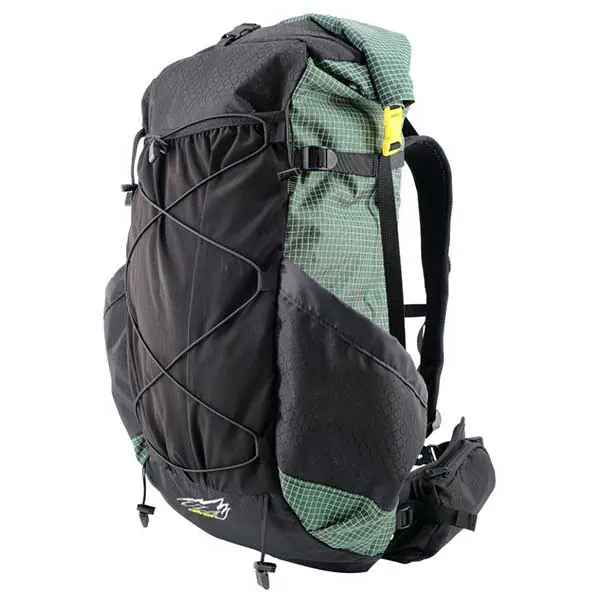
Highest-Rated JMT Backpacks
The Durston Gear Kakwa was the highest-rated pack on the JMT this year, making its first appearance on the top JMT packs. It’s an Ultra 200X pack that weighs 31.3 oz / 887 g (in a medium size) and has a base price of $260. This pack’s maximum recommended load is 45 lb / 20 kg. There are 55- and 40-liter versions of the pack available.


JMT Backpack Breakdown
| Popularity | Rating | Backpack | Price | Weight | Liters | Max Load |
|---|---|---|---|---|---|---|
| 1 | 8.11 | Osprey Exos/Eja | $260 | 2.84 lb | 1.29 kg | 58 | 35 lb | 16 kg |
| 2 | 8.61 | Hyperlite Mountain Gear Southwest/Junction/Windrider | $379 | 1.98 lb | 897 g | 55 | 40 lb | 18 kg |
| 3 | 7.75 | Osprey Atmos AG/Aura AG | $340 | 4.32 lb | 1.96 kg | 50 | 35 lb | 16 kg |
| 4 | 7.84 | Gossamer Gear Mariposa | $285 | 1.84 lb | 834 g | 60 | 35 lb | 16 kg |
| 5 | 8.44 | ULA Circuit | $280 | 2.33 lb | 1.06 kg | 68 | 35 lb | 16 kg |
| 6 | 7.87 | Osprey Aether/Ariel | $300 | 5 lb | 2.27 kg | 55 | 60 lb | 27 kg |
| 7 | 7.50 | Gregory Baltoro/Deva | $330 | 4.9 lb | 2.22 kg | 65 | 50 lb | 22 kg |
| 8 | 9.27 | Durston Gear Kakwa | $260 | 1.94 lb | 890 g | 55 | 45 lb | 20 kg |
| 9 | 8.60 | REI Co-op Flash/Women's | $199 | 2.81 lb | 1.27 kg | 55 | 30 lb | 14 kg |
| 10 | -- | Granite Gear Crown2 | Discontinued | -- | -- | -- |
| 11 | -- | ULA Catalyst | $300 | 2.78 lb | 1.26 kg | 75 | 40 lb | 18 kg |
| 12 | -- | Granite Gear Blaze/Women's | $300 | 3 b | 1.360 kg | 60 | 50 lb | 22 kg |
Shelters
Shelters – essentially the umbrella term for tents because there are also options such as bivy sacks, tarps, pyramids, and lean-tos – are another essential piece of John Muir Trail gear. Hikers should consider whether they would like their shelter to be freestanding.
What is a freestanding shelter? It’s a shelter that needs only the tent body and its poles to be set up – no stakes or superfluous tie-outs are required. The year’s most common shelter is an example of this kind of shelter: the Big Agnes Copper Spur HV UL2.
Shelters that are not freestanding must be staked or tied out to be set up properly. These shelters typically (but not always) use trekking poles instead of the more traditional tent poles to be set up – something to consider when considering shelter weights and prices. An example of this kind of shelter is the year’s fourth-most-common shelter, the Zpacks Duplex.
Lastly, a semi-freestanding shelter is one that (typically) uses tent poles and can stand on its own but that requires at least one stake or tie-outs to be completely set up. An example of this kind of shelter is the year’s fifth-most-common shelter, the Big Agnes Tiger Wall UL2.
Shelter Type
The percentage of hikers using each type of shelter on the John Muir Trail.
- 40.9% – Non-freestanding
- 39.8% – Freestanding
- 16.9% – Semi-freestanding
- 1.2% – Hammock
- 0.8% – Bivy
- 0.4% – Tarp

Most Common/Highest Rated JMT Shelters
The Big Agnes Copper Spur HV UL2 was the most common and the highest-rated shelter on the JMT this year. It’s a $530, two-person, side-entry, 2.69 lb / 1.22 kg freestanding shelter made from silicone-treated ripstop nylon/polyester mesh. It has 29 square feet / 2.69 square meters of floor space and two nine-square-foot vestibules.
JMT Shelter Breakdown
| Popularity | Rating | Shelter | Price | Weight | Floor | Freestanding | Capacity |
|---|---|---|---|---|---|---|---|
| 1 | 9.10 | Big Agnes Copper Spur HV UL2 | $550 | 2.69 lb | 1.22 kg | 29 ft² / 2.7 m² | Yes | 2 |
| 2 | 8.76 | Durston Gear X-Mid 1 | $240 | 1.75 lb | 795 g | 20 ft² / 1.85 m² | No | 1 |
| 3 | 8.53 | Durston Gear X-Mid 2 | $280 | 2.21 lb | 1.005 kg | 33.2 ft² / 3.1 m² | No | 2 |
| 4 | 8.47 | Zpacks Duplex | $669 | 1.16 lb | 525 g | 28 ft² / 2.6 m² | No | 2 |
| 5 | -- | Big Agnes Tiger Wall UL2 | $450 | 2.19 lb | 993 g | 28 ft² / 2.6 m² | Semi | 2 |
| 6 | -- | NEMO Equipment Hornet OSMO 2 | $430 | 2.09 lb | 948 g | 27.5 ft² / 2.6 m² | Semi | 2 |
| 7 | -- | MSR Hubba Hubba 2 | $550 | 2.88 lb | 1.306 kg | 29 ft² / 2.7 m² | Yes | 2 |
Note: The Durston Gear X-Mid Pro 1 and X-Mid Pro 2 are available in woven and Dyneema versions with or without stakes. The data above reflects the woven versions without stakes.
Sleeping Bags & Quilts
Is there a generic term for sleeping bags and quilts? Sleeping sacks? Insulation-filled backpacking tortillas? Writing sleeping bags/quilts feels a bit excessive/unnecessary. Suggestions welcome.
Quilts have become the unofficial standard in thru-hiker kits; four of the top five most common insulation-filled backpacking tortillas were quilts. That said, many quilts come in a variety of temperature ratings and are, many times, largely customizable.
Individual hiker temperature needs can vary greatly. How warm of a sleeper are you? Which sleeping pad do you have? Do you sleep in your clothes? With another person? In a small tent? A big tent? With a dog? Bigfoot?
The typical range for JMT sleeping bags and quilts is between 10°F and 20°F (-12.2°C to -6.7°C). Which bag will be best for you depends. Here’s what this year’s class had.
Thru-Hikers
17.7°F
-7.9°C
(M = 20°F/-6.7°C | σ = 8.5)
Average sleeping bag temperature
Thru-Hikers
34.5%
Percentage of hikers using a quilt
Thru-Hikers
19.7°F
-6.8°C
Average temperature of hiker bag/quilt who wanted something warmer
Most Common JMT Sleeping Bags
This year, the Enlightened Equipment Revelation was the JMT’s most common sleeping bag (quilt). The Revelation is highly customizable and comes in various lengths, widths, temperature ratings, fill powers, and colors. What’s the difference between the Enigma and the Revelation? The Revelation can be laid flat (i.e., the Enigma has a zippered footbox).
Highest-Rated JMT Sleeping Bags & Quilts
This year, the Enlightened Equipment Enigma was the JMT’s highest-rated sleeping bag (quilt). The Enigma is highly customizable and comes in various lengths, widths, temperature ratings, fill powers, and colors. What’s the difference between the Enigma and the Revelation? The Enigma has a sewn footbox (i.e., the Revelation can be laid flat).
JMT Sleeping Bag & Quilt Breakdown
| Popularity | Rating | Bag/Quilt | Price | Weight | Temperature | Fill | Fill Weight |
|---|---|---|---|---|---|---|---|
| 1 | 8.00 | Enlightened Equipment Revelation | $420 | 1.2 lb | 544 g | 20°F / -6.7°C | 950 duck | 14.4 oz / 408 g |
| 2 | 9.21 | Enlightened Equipment Enigma | $430 | 1.32 lb | 601 g | 20°F / -6.7°C | 950 duck | 13.83 oz / 392 g |
| 3 | 9.07 | REI Co-op Magma | $429 | 2.22 lb | 1006 g | 15°F / -9°C | 850 goose | 23.3 oz / 660 g |
| 4 | -- | Feathered Friends Flicker UL | $529 | 1.58 lb | 715 g | 20°F / -6.7°C | 950 goose | 14.7 oz / 417 g |
| 5 | -- | Marmot Helium | $479 | 2.17 lb | 984 g | 15°F / -9.4°C | 800 goose | 18 oz / 510 g |
| 6 | -- | NEMO Equipment Tempo | $160 | 3.62 lb | 1.65 kg | 20°F / -6.7°C | Synthetic Stratofiber Fill | 41.9 oz / 1.188 kg |
| 7 | -- | Western Mountaineering UltraLite | $620 | 1.88 lb | 853 g | 20°F / -6.7°C | 850 goose | 16 oz / 454 g |
Sleeping Pads
Sleeping pads are another must-have item on the John Muir Trail. Hikers have two options: an inflatable or foam sleeping pad.
There are pros and cons to both. Foam pads can’t pop, can be easily deployed, aren’t noisy, and make acceptable LARPing weapons; inflatable pads pack down small, have higher R-values (i.e., they’re warmer), can (sometimes) be lighter, and make acceptable rafts.
Which sleeping pad is best depends on your personal needs and, in some cases, how much durability you’re willing to sacrifice to save weight. Most JMT hikers used inflatable sleeping pads, with 31.4% using some Therm-a-Rest NeoAir XLite NXT version (regular, small, or the now-discontinued women’s).
The percentage of hikers using each style of sleeping pad on the John Muir Trail this year.
- 94.1% – Inflatable
- 5.9% – Foam

Most Common & Highest Rated JMT Sleeping Pads
This year, the Therm-a-Rest NeoAir XLite NXT was the most common sleeping pad on the John Muir Trail. In size regular, this air pad has an R-value of 4.5, weighs 13 oz / 369 g, packs to 4.1 x 9 in / 10 x 23 cm, and is 3 in / 7.6 cm thick. It’s also available in short, wide, and large sizes.
There were only three sleeping pads with enough users to warrant a rating, and the ratings mirrored the popularity of each pad, with the XLite NXT being the highest-rated, the NEMO Equipment Tensor (Insulated) being the second-highest-rated, and the XTherm NXT being the third-highest-rated.
JMT Sleeping Pad Breakdown
| Popularity | Rating | Sleeping Pad | Price | Weight | R-Value | Thickness |
|---|---|---|---|---|---|---|
| 1 | 8.67 | Therm-a-Rest NeoAir XLite NXT | $210 | 13 oz | 369 g | 4.5 | 3 in / 7.6 cm |
| 2 | 8.48 | NEMO Equipment Tensor (Insulated) | $200 | 14.5 oz | 411 g | 4.2 | 3 in / 7.6 cm |
| 3 | 8.38 | Therm-a-Rest NeoAir XTherm NXT | $240 | 16 oz | 454 g | 7.3 | 3 in / 7.6 cm |
| 4 | -- | Big Agnes Rapide SL | $150 | 18 oz | 510 g | 4.8 | 4.25 in / 10.8 cm |
| 5 | -- | Therm-a-Rest Z Lite SOL | $58 | 14 oz | 397 g | 2 | 0.75 in / 1.9 cm |
| 6 | -- | Sea to Summit UltraLight Insulated | $159 | 16.9 oz | 480g | 3.1 | 2 in / 5 cm |
| 7 | -- | NEMO Equipment Switchback | $55 | 14.5 oz | 415 g | 2 | 0.9 in / 2.3 cm |
| 8 | -- | Therm-a-Rest NeoAir UberLite | $230 | 8.8 oz | 250 g | 2.3 | 2.5 in / 6.4 cm |
| 9 | -- | Therm-a-Rest ProLite | $125 | 23 oz | 652 g | 3.2 | 1.5 in / 3.8 cm |
Insulated Jackets
Something to keep the top half of your body warm – whether this is a base layer, a fleece, or an insulated jacket – is something else every John Muir Trail hiker should have with them. Of this year’s class, 92.4% had an insulated jacket – meaning 7.6% said they didn’t bring one.
I’m using “Insulated jacket” because “down jacket” isn’t accurate since not all jackets use down insulation and because the word “puffy” isn’t quite official. Also, I don’t know whether to spell the plural “puffys” or “puffies.” They both look weird.
Many of the most popular insulated jackets have hooded and non-hooded versions. Typically, the hoodless versions are called “jackets,” while the hooded versions are called hoodies (e.g., Mountain Hardwear Ghost Whisperer/2 Jacket vs. Mountain Hardwear Ghost Whisperer/2 Hoody).
The percentage of hikers using a hoody versus a jacket (without a hood) on the John Muir Trail.
- 58.5% – Hoody
- 41.5% – Jacket (no hood)

Most Common JMT Insulated Jackets
This year, the Mountain Hardwear Ghost Whisperer/2 Hoody (Men’s/Women’s) was the most common jacket on the John Muir Trail. The 800-fill, 8.8 oz / 249 g jacket has a 10D ripstop shell, two zippered hand pockets, and synthetic insulation in the first baffle at both cuffs to prevent wetting out. This year, the jacket and UL versions of the Ghost Whisperer/2 were also popular among JMT hikers.
Highest-Rated JMT Insulated Jackets
This year, the Arc’teryx Cerium Hoody (Men’s/Women’s) was the highest-rated insulated jacket on the John Muir Trail. It’s an 11.9 oz / 337 g, 850-fill power-down jacket with a nylon shell and two handwarmer pockets.
| Popularity | Rating | Insulated Jacket | Price | Weight | Hood | Pockets |
|---|---|---|---|---|---|---|
| 1 | 8.65 | Mountain Hardwear Ghost Whisperer/2 Hoody (M/W) | $360 | 8.8 oz | 249 g | Yes | 2 hand |
| 2 | 9.40 | Arc'teryx Cerium Hoody (M/W) | $400 | 11.9 oz | 337 g | Yes | 2 hand | 1 internal chest |
| 3 | 9.36 | Patagonia Down Sweater (M/W) | $279 | 13 oz | 369 g | No | 2 hand | 2 drop | 1 internal chest |
| 4 | 7.21 | REI Co-op 650 (M/W) | $129 | 10.9 oz | 309 g | Yes | 2 hand | 2 drop |
| 5 | 8.77 | Enlightened Equipment Torrid (M/W) | $200 | 8.4 oz | 238 g | Yes | 2 hand |
| 6 | 9.08 | Patagonia Nano Puff Jacket (M/W) | $239 | 11.9 oz | 337 g | No | 2 hand | 1 internal chest |
| 7 | 9.25 | Mountain Hardwear Ghost Whisperer 2 (M/W) | $330 | 8.3 oz | 236 g | No | 2 hand |
| 8 | 9.18 | Decathlon Forclaz MT100 Hooded (M/W) | $100 | 10.2 oz | 290 g | Yes | 2 hand |
| 9 | 8.80 | Patagonia Micro Puff Hoody (M/W) | $329 | 10.5 oz | 298 g | Yes | 2 hand | 2 drop |
| 10 | 9.40 | Rab Microlight Alpine Jacket (M/W) | $295 | 16.1 oz | 456 g | Yes | 2 hand | 1 external chest |
| 11 | -- | Mountain Hardwear Ghost Whisperer UL (M/W) | $420 | 6.7 oz | 189 g | Yes | 2 hand |
| 12 | -- | Patagonia Micro Puff Jacket (M/W) | $279 | 10.4 oz | 295 g | No | 2 hand | 2 drop |
| 13 | -- | Patagonia Nano Puff Hoody (M/W) | $289 | 12.8 oz | 363 g | Yes | 2 hand | 1 internal chest |
Shells
John Muir Trail hikers typically don’t use shells or rain jackets daily, but they shouldn’t be completely overlooked. Weather on the JMT can be unpredictable, and getting caught on the trail unprepared in a storm could quickly become life-threatening.
Most Common JMT Shells
This year, the Outdoor Research Helium (Men’s/Women’s) was the most common rainwear on the John Muir Trail. It’s a $170 jacket that weighs just 6.2 oz / 176 g. It’s not going to keep you dry for days of continuous downpour, but that’s typically not expected in the Sierra during the popular JMT hiking months. The jacket has a single chest pocket and is made with Pertex Shield Diamond Fuse 2.5-layer fabric.

(discontinued)
Highest-Rated JMT Shells
This year, the Montbell Versalite (Men’s/Women’s) was the highest-rated rainwear on the John Muir Trail. It’s a 6.4 oz / 182 g jacket made with GORE-TEX WINDSTOPPER fabric. It has pit zips, a pocket hem adjuster, and two hand-warmer pockets placed hiker up to not be in the way of a hipbelt, fanny pack, or harness.
JMT Shell Breakdown
| Popularity | Rating | Shell | Price | Weight | Fabric | Pit Zips |
|---|---|---|---|---|---|---|
| 1 | 8.06 | Outdoor Research Helium (M/W) | $170 | 6.2 oz | 176 g | 2.5-layer Pertex Shield (Nylon) | No |
| 2 | 7.79 | Frogg Toggs Ultra-Lite (M/W) | $30 | 5.5 oz | 156 g | Three-layer polypropylene | No |
| 3 | 9.56 | Montbell Versalite (M/W) | $249 | 6.4 oz | 182 g | 2-layer GORE-TEX Infinium Windstopper | Yes |
| 4 | -- | REI Co-op Essential | Discontinued | 8.8 oz | 250 g | 2.5-layer Waterproof Nylon | No |
| 5 | 9.36 | Arc’teryx Beta (M/W) | $400 | 10.6 oz | 300 g | GORE-TEX w/ GORE C-KNIT backer | No |
| 6 | -- | Marmot PreCip (M/W) | $100 | 11 oz | 305 g | NanoPro 100% Nylon | Yes |
| 7 | -- | Patagonia Torrentshell (M/W) | $179 | 14.1 oz | 400 g | 3L 3.5-oz 50D ECONYL Recycled Nylon | Yes |
| 8 | -- | The North Face Venture 2 (M/W) | Discontinued | 11.6 oz | 329 g | 2.5-layer DryVent (Nylon) | Yes |
| 9 | -- | Columbia OutDry Featherweight (M/W) | Discontinued | 7.5 oz | 213 g | OutDry Extreme (Nylon) | No |
| 10 | -- | Lightheart Gear Rain Jacket | $125 | 6 oz | 170 g | 20D Ripstop Polyester | Yes |
| 11 | -- | Arc’teryx Alpha (M/W) | $700 | 13.1 oz | 370 g | GORE-TEX PRO | Yes |
Fleeces
Many hikers carry a fleece in addition to or instead of an insulated jacket. They are typically more comfortable to hike in (if you’re using your extra layers for more than just staying warm at camp) and can offer more versatility than a puffy, depending on the situation.
It was a pretty even split among hikers on whether they had a fleece; 46.6% of hikers brought a fleece.
The following breakdown shows the percentage of JMT hikers who brought only a fleece, only an insulated jacket, both, or neither (not recommended).
- 40.7% – Insulated jacket and fleece
- 51.6% – Insulated jacket only
- 5.0% – Fleece only
- 2.7% – Neither

Most Common & Highest-Rated JMT Fleeces
This year, the Senchi Designs Alpha 90 Hoodie (formerly the Senchi Lark) was the most common fleece on the John Muir Trail. It’s made with 78% recycled polyester, weighs 4.8 oz / 136 g in a size large (depending on the fabric color), and has a single front kangaroo pocket. The Polartec Alpha Direct 90 fabric is lightweight, stretchy, and semi-transparent.
The Senchi Designs Alpha 90 Hoodie was the only fleece that received ratings from at least ten hikers; it was rated a 9.10.
JMT Fleece Breakdown
| Popularity | Rating | Fleece | Price | Weight | Fabric | Zip |
|---|---|---|---|---|---|---|
| 1 | 9.10 | Senchi Designs Alpha 90 Hoodie | $95 | 4.5 oz | 128 g | Polartec Alpha Direct 90 | None |
| 2 | -- | Melanzana Microgrid Hoodie | $86 | 12.1 oz | 343 g (L) | Polyester Micro Grid | None |
| 3 | -- | Mountain Hardwear AirMesh Hoodie (M/W) | $85 | 4.75 oz | 135 g | Polyester | None |
| 4 | -- | Patagonia R1 Pullover (M/W) | $139 | 11.7 oz | 332 g | 93% Recycled Polyester, 7% Spandex | Quarter |
| 5 | -- | KUIU Peloton 97 | $99 | 5.9 oz | 167 g | TORAY Karuishi Fleece | Quarter |
| 6 | -- | Mountain Hardwear Microchill 1/4 Zip (M/W) | $65 | 8.7 oz | 247 g | Recycled Polyester | Quarter |
Shoes
Shoes are perhaps one of the most important gear choices for John Muir Trail hikers as they’re what’s literally moving you up the trail. They’re also one of the most individual-specific pieces of gear. Let me get this out of the way now and say there is no such thing as a “best hiking shoe.”
What may be the objective best choice for one person could easily be the objective worst choice for another person. The “best hiking shoes” are the ones that work best for the individual. Don’t be afraid of trying multiple models from multiple brands to find the most comfortable shoe for your foot.
This year, I’m breaking down shoes a bit more. I’ve included the type of shoe used, whether thru-hikers used waterproof shoes, and whether thru-hikers changed their shoe size during their hikes.
Type of Shoe Used
- 66.4% – Low top shoes
- 27.7% – Mid-top shoes
- 4.7% – Boots
- 0.8% – Barefoot shoes
- 0.4% – Sandals

Waterproof Shoe Use
Many shoes commonly used by JMT hikers have waterproof versions available. However, the majority of hikers choose not to use waterproof shoes.
- 76.7% – Not using waterproof shoes
- 23.3% – Using waterproof shoes

For more on hiking shoes, check out the Best Shoes for Thru-Hiking.
Most Common JMT Shoes
The Altra Lone Peak (Men’s/Women’s) was the most common shoe on the feet of John Muir Trail hikers this year – for the seventh year in a row. They cost $140 per pair, have a 0 mm heel-toe drop, and weigh 21.4 oz / 607 g per pair. Altra frequently releases new versions of the Lone Peak; at the time of publication, the latest is the Lone Peak 8.
Highest-Rated JMT Shoes
This year, the HOKA ONE ONE Speedgoat (Men’s/Women’s) was the highest-rated shoe on the JMT. It’s a low-cut trail runner that weighs 20.6 oz / 584 g and costs $155 per pair. A waterproof version (men’s/women’s) is also available. HOKA frequently releases new versions of this shoe; at the time of publication, the current version is the 5.
JMT Shoe Breakdown
| Popularity | Rating | Shoes | Price | Weight | Heel-Toe Drop |
|---|---|---|---|---|---|
| 1 | 8.52 | Altra Lone Peak (M/W) | $150 | 22 oz | 624 g | 0 mm |
| 2 | 8.63 | HOKA ONE ONE Speedgoat (M/W) | $155 | 20.6 oz | 584 g | 4 mm |
| 3 | 7.36 | Salomon X Ultra (M/W) | $145 | 21 oz | 596 g | 10 mm |
| 4 | 8.30 | Altra Olympus (M/W) | $170 | 24.6 oz | 697 g | 0 mm |
| 5 | 8.20 | Merrell Moab (M/W) | $120 | 33 oz | 936 g | 11.5 mm |
| 6 | -- | Brooks Cascadia (M/W) | $140 | 22 oz | 624 g | 8 mm |
| 7 | -- | La Sportiva Ultra Raptor (M/W) | $149 | 25 oz | 709 g | 9 mm |
| 8 | -- | Lowa Renegade GTX Mid (M/W) | $255 | 39 oz | 1.106 kg | N/A |
Socks
After shoes, John Muir Trail hiker socks take the most (if not more) damage from the daily grind of the trail. Darn Tough is the standout sock brand among hikers – occupying all five of the most common spots.
Hikers love these socks for their comfort and durability and because they’re “Unconditionally Guaranteed for Life.” Basically, wear a hole in your sock(s) while hiking, and you can get a new pair (reasonable exceptions apply, such as fire damage or animal tearing apart). 57% of JMT hikers had Darn Tough socks on the trail.
For more on hiking socks, check out the Best Socks for Thru-Hiking.
Most Common JMT Socks
Darn Tough dominated John Muir Trail hiker feet this year, with the Darn Tough Hiker Micro Crew Midweight (Men’s/Women’s) being the most common model. They are made of 61% merino wool, 36% nylon, and 3% spandex; they have a medium cushion, cost $25 a pair, and have an unconditional lifetime guarantee. The third most common sock was the quarter-length version (men’s/women’s) of this sock.
Highest-Rated JMT Socks
Like the most common sock, the Darn Tough Hiker Micro Crew Midweight (Men’s/Women’s) was the year’s highest-rated sock on the John Muir Trail. They are made of 61% merino wool, 36% nylon, and 3% spandex; they have a medium cushion, cost $25 a pair, and have an unconditional lifetime guarantee. The fifth-highest-rated sock was the quarter-length version (men’s/women’s) of this sock.
JMT Sock Breakdown
| Popularity | Rating | Socks | Price | Fabric | Cushion | Height |
|---|---|---|---|---|---|---|
| 1 | 9.55 | Darn Tough Hiker Micro Crew Midweight (M/W) | $25 | 61% merino wool, 36% nylon, 3% spandex | Medium | Crew |
| 2 | 9.14 | Darn Tough Hiker Boot Midweight (M/W) | $27 | 64% merino wool, 33% nylon, 3% spandex | Medium | Crew |
| 3 | 9.62 | Darn Tough Hiker Quarter Midweight (M/W) | $22 | 59% merino wool, 38% nylon, 3% spandex | Medium | Ankle |
| 4 | 9.42 | Darn Tough Light Hiker Micro Crew (M/W) | $24 | 54% nylon, 43% merino wool, 3% spandex | Light | Crew |
| 5 | 9.18 | Darn Tough Light Hiker Quarter (M/W) | $21 | 52% nylon, 44% merino wool, 4% spandex | Light | Ankle |
| 6 | 9.00 | Injinji Trail Midweight Mini-Crew (M/W) | $16 | 58% nylon, 39% CoolMax polyester, 3% spandex | Medium | Ankle |
| 7 | 8.94 | Smartwool Hike Light Cushion Crew (M/W) | $24 | 56% merino wool, 11% nylon, 31% recycled nylon, 2% elastane | Light | Crew |
| 8 | -- | Smartwool Hike Full Cushion Crew (M/W) | $26 | 56% merino wool, 11% nylon, 31% recycled nylon, 2% elastane | Medium | Crew |
| 9 | -- | Smartwool Hike Light Cushion Ankle (M/W) | $22 | 56% merino wool, 11% nylon, 31% recycled nylon, 2% elastane | Light | Ankle |
Stoves
Hikers have many stoves and fuel source choices when selecting their backpacking stoves. These include denatured alcohol/HEET, solid fuel, liquid fuel, isobutane/propane (gas canisters), and even old-fashioned wood.
96.3% of the stoves carried by hikers used isobutane/propane gas canisters.
That said, some hikers were still stoveless (they did not carry a stove on the trail), and others changed their minds as the trail went on. Here’s a breakdown of what that looked like.
Stoveless JMT Hikers
- 92.7% – Carried stove the entire hike
- 5.7% – Stoveless the entire hike
- 0.8% – Started with a stove and then went stoveless
- 0.8% – Started stoveless and then got a stove
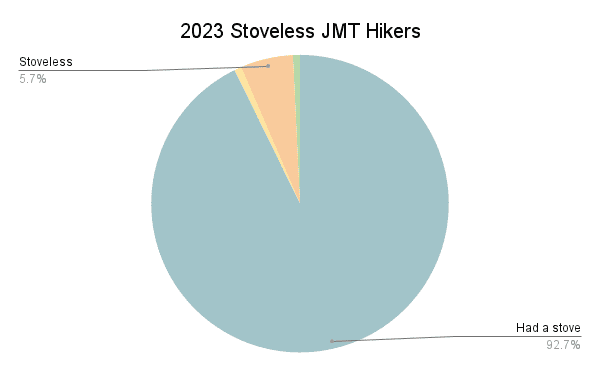
Most Common JMT Stoves
This year, the MSR PocketRocket 2 was the most common stove on the John Muir Trail. It’s a 2.6 oz / 74 g canister stove that requires a lighter to ignite (i.e., no push-button ignition). The push-button start version, the MSR PocketRocket Deluxe, was the fourth most common stove. The reported boil time for one liter of water is 3.5 minutes (at sea level).
Highest-Rated JMT Stoves
This year, the MSR PocketRocket 2 was the most common stove on the John Muir Trail. It’s a 2.6 oz / 74 g canister stove that requires a lighter to ignite (i.e., no push-button ignition). The push-button start version, the MSR PocketRocket Deluxe, was the fifth-highest-rated stove. The reported boil time for one liter of water is 3.5 minutes (at sea level).
JMT Stove Breakdown
| Popularity | Rating | Stoves | Price | Weight | Integrated Pot | Fuel |
|---|---|---|---|---|---|---|
| 1 | 9.64 | MSR PocketRocket 2 | $60 | 2.6 oz | 73 g | No | Isobutane canister |
| 2 | 8.56 | JetBoil Flash | $130 | 13.1 oz | 371 g | Yes | Isobutane canister |
| 3 | 9.44 | SOTO Windmaster | $70 | 3.1 oz | 88 g | No | Isobutane canister |
| 4 | 8.31 | MSR PocketRocket Deluxe | $85 | 2.9 oz | 83 g | No | Isobutane canister |
| 5 | 7.60 | BRS 3000T | $20 | 0.88 oz | 26 g | No | Isobutane canister |
| 6 | 8.69 | JetBoil MiniMo | $165 | 14.6 oz | 414 g | Yes | Isobutane canister |
| 7 | -- | SOTO Amicus | $45 | 2.5 oz | 71 g | No | Isobutane canister |
| 8 | -- | JetBoil Zip | $100 | 11.75 oz | 333 g | Yes | Isobutane canister |
| 9 | -- | Snow Peak GigaPower 2.0 | $50 | 4.23 oz | 120 g | No | Isobutane canister |
Water Treatment
Despite what a small vocal minority of hikers may tell you, water treatment is essential on the John Muir Trail. Pooping your pants on the trail (or in town) because you have contracted giardia is not fun. On that note, be sure to sanitize your hands frequently, keep your hands out of bags of food – especially other people’s – and pour that delicious snack into your hand instead.
Hikers have many options available regarding water filtration – hollow fiber membrane squeeze filters, pump filters, UV filters, and chemical treatments (e.g., bleach or iodine), to name a few. Yes, you can also boil water, but it is not a realistic long-term water treatment solution on the JMT, as the amount of time and gas it would take to boil all one’s water would be immense.
94.9% of hikers used a hollow membrane squeeze, gravity, or pump water treatment device. That is to say, just 5.1% of JMT hikers used chemicals or UV to treat water sources.
All five of the most common water treatments, as do all five of the highest-rated, fall into this category. These filters are typically inexpensive, lightweight, and easy to use, but they can also clog quickly and are susceptible to freezing (and breaking), so it’s important to care for them properly.
The most common hollow membrane squeeze filter (and the most common water treatment overall), the Sawyer Squeeze, was used by nearly 40.7% of hikers.
Most Common JMT Water Treatment
The Sawyer Squeeze was (by far) the most common John Muir Trail water filter this year. It’s a $41, 3 oz / 85 g hollow fiber filter that rids your drinking water of protozoa and bacteria (and floaties). It can be used with Sawyer bags (included with the filter) or compatible water bottles (Smartwater is the bottle of choice for many hikers). The Sawyer comes in two smaller sizes, the Sawyer Micro and the Sawyer MINI.
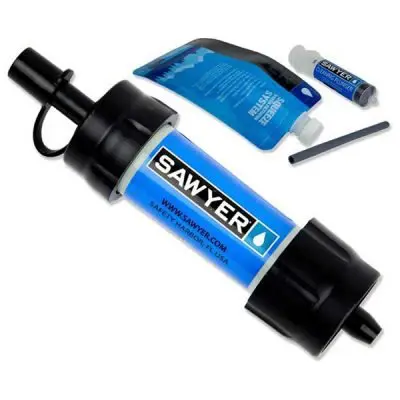
Highest-Rated JMT Water Treatment
The Platypus GravityWorks was the year’s highest-rated water treatment device on the John Muir Trail. It’s a two-bag, $126 gravity-fed hollow fiber filter that weighs 10.9 oz / 309 g. The 2L version is better suited for solo backpackers, but 4L and 6L versions of the Platypus GravityWorks are also available for couples or groups.
JMT Water Treatment Breakdown
| Popularity | Rating | Water Treatment | Price | Weight | Medium | Removes |
|---|---|---|---|---|---|---|
| 1 | 8.83 | Sawyer Squeeze | $41 | 3 oz | 85 g | Hollow fiber | Protozoa / bacteria |
| 2 | 8.77 | Katadyn BeFree | $45 | 2.3 oz | 65 g | Hollow fiber | Protozoa / bacteria |
| 3 | 8.00 | Sawyer MINI | $25 | 2 oz | 57 g | Hollow fiber | Protozoa / bacteria |
| 4 | 8.50 | Katadyn Gravity BeFree | $75 | 6.8 oz | 193 g | Hollow fiber | Protozoa / bacteria |
| 5 | 8.91 | Platypus GravityWorks | $126 | 10.9 oz | 309 g | Hollow fiber | Protozoa / bacteria |
| 6 | 8.45 | Platypus QuickDraw | $50 | 2.2 oz | 63 g | Hollow fiber | Protozoa / bacteria |
Bear Canisters
Carrying a bear canister on the John Muir Trail is a legal requirement all hikers must follow.
Bear canisters are essentially bear-proof (not scent-proof) canisters made from plastic or carbon fiber where you store all your food and attractants (anything with an odor). The idea is to prevent bears from being able to access your food and becoming food-conditioned (because once this happens, bears typically become greater threats to humans and are subsequently euthanized).
Most Common JMT Bear Canisters
This year, the BearVault BV500 was the most common bear canister on the John Muir Trail. It has an 11.5 L capacity and is made from polycarbonate (transparent blue plastic). The lid can be removed without tools (or coins), and the canister measures 12.7 x 8.7 in / 32 x 22 cm.
Highest-Rated JMT Bear Canisters
The Bearikade Expedition was the highest-rated bear canister on the JMT this year; it’s also incredibly expensive at $424. It’s made of carbon fiber, has a 14.7 L capacity, and weighs 37 oz / 1.049 kg. A notable difference between the Bearikades and other bear canisters is that the Bearikade’s lid does not completely come off and requires a coin (or other thin, hard object) to open.
JMT Bear Canister Breakdown
| Popularity | Rating | Bear Canister | Price | Weight | Capacity | Material |
|---|---|---|---|---|---|---|
| 1 | 8.16 | BearVault BV500 | $95 | 40 oz | 1.134 kg | 11.5 L | Polycarbonate |
| 2 | 8.62 | Bearikade Weekender | $359 | 32 oz | 907 g | 10.6 L | Carbon fiber |
| 3 | 9.36 | Bearikade Expedition | $424 | 37 oz | 1.049 kg | 14.7 L | Carbon fiber |
| 4 | 8.63 | BearVault BV450 | $84 | 33.6 oz | 953 g | 7.2 L | Polycarbonate |
| 5 | 8.61 | BearVault BV475 | $90 | 36 oz | 1.021 kg | 9.3 L | Polycarbonate |
| 6 | -- | Bearikade Blazer | $384 | 34 oz | 964 g | 12.3 L | Carbon fiber |
Trekking Poles
Not all hikers carry trekking poles and not all hikers who carry them do so for the entirety of the trail (careful not to leave your trekking poles behind – especially in a hitch). Some hikers carry a trekking pole or two to set up their shelter, while others may use them for every step of the trail.
98.4% of John Muir Trail hikers used trekking poles this year.
If you’ve never used trekking poles before, they may be worth considering if you plan to hike the John Muir Trail. Here are the most common and highest-rated trekking poles from this year’s JMT class.
Most Common JMT Trekking Poles
This year, the Black Diamond Alpine Carbon Cork was the most common trekking pole on the John Muir Trail. It’s a 100% carbon fiber set of poles that cost $200, weighs 17.1 oz / 485 g (per pair), has cork grips, an external lever lock, and collapses to 24 in / 61 cm.
Highest-Rated JMT Trekking Poles
This year, the most common trekking poles on the John Muir Trail were the Black Diamond Trail Ergo Cork. This aluminum set of poles costs $140, weighs 18 oz / 510 g (per pair), has cork grips, an external lever lock, and collapses to 27 in / 69 cm.
JMT Trekking Pole Breakdown
| Popularity | Rating | Trekking Poles | Price | Weight | Handle | Shaft | Collapsed Length |
|---|---|---|---|---|---|---|---|
| 1 | 9.24 | Black Diamond Alpine Carbon Cork | $200 | 17.1 oz | 485 g | Cork | Carbon fiber | 24 in / 61 cm |
| 2 | 9.32 | Black Diamond Trail | $120 | 17 oz | 482 g | Foam | Aluminum | 25 in / 64 cm |
| 3 | 9.21 | Black Diamond Alpine Carbon Z | $210 | 15.8 oz | 447 g | Cork | Carbon fiber | 15.7 in / 40 cm |
| 4 | 9.07 | Black Diamond Distance FLZ | $170 | 15.7 oz | 445 g | Foam | Aluminum | 16 in / 40 cm |
| 5 | 8.79 | REI Co-op Flash Carbon | $159 | 13.6 oz | 386 g | Foam | Carbon fiber | 25 in / 64 cm |
| 6 | 9.38 | Black Diamond Trail Ergo Cork | $140 | 18 oz | 510 g | Cork | Aluminum | 27 in / 69 cm |
| 7 | 8.25 | Cascade Mountain Tech Carbon Fiber | $75 | 15.6 oz | 442 g | Cork | Carbon fiber | 26 in / 65 cm |
| 8 | -- | Gossamer Gear LT5 | $195 | 9.8 oz | 278 g | Foam | Carbon fiber | 23.5 in / 60 cm |
| 9 | -- | Leki Legacy Lite | $100 | 18 oz | 510 g | Cork | Aluminum | 26 in / 65 cm |
| 10 | -- | Leki Corklite | Discontinued | 19.1 oz | 542 g | Cork | Aluminum | 24.4 in / 62 cm |
| 11 | -- | REI Co-op Traverse | $119 | 19.5 oz | 553 g | Cork | Aluminum | 25 in / 64 cm |
Satellite Messengers/PLBs
I am a huge proponent of carrying a satellite messenger or PLB in the backcountry. Honestly, recreating – at least thru-hiking – without one is borderline irresponsible (at best). Fortunately, these devices are becoming more popular; 83.7% of John Muir Trail hikers carried a satellite messenger or PLB on the trail.
What’s the difference between a PLB and a satellite messenger? A PLB is a device (generally) without a subscription and with a singular function – to send an SOS. PLBs generally use different satellite networks than satellite messengers and are (at least widely thought to be) more reliable. However, this is not to say that satellite messengers are unreliable.
A satellite messenger (generally) offers two-way communication and additional features such as real-time tracking or maps. Satellite messengers usually require a subscription to function (this typically includes the ability to send an SOS).
For more on satellite messengers and PLBs, check out the Best Satellite Messengers for Thru-Hiking.
Most Common JMT Satellite Messengers/PLBs
This year, the inReach Mini 2 was the most common satellite messenger on the John Muir Trail. The previous (now discontinued) model, the inReach Mini, was the second most common. The inReach Mini 2 is an awesome piece of equipment that can be used for two-way messaging, navigation, tracking, and as an SOS device. It weighs 3.5 oz / 99 g, has an easy-to-use mobile app, and requires a monthly (or annual) subscription to function.
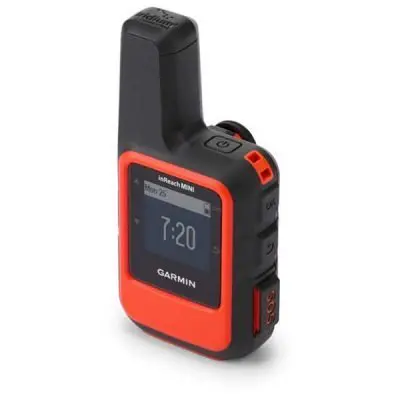
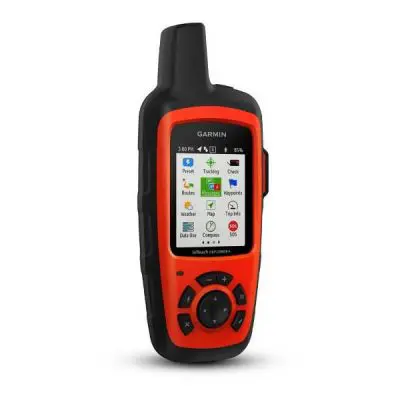
Highest-Rated JMT Satellite Messengers/PLBs
The Garmin inReach Explorer+ was the highest-rated satellite messenger on the John Muir Trail this year, but it has been discontinued and essentially replaced by the Garmin inReach Mini 2 and accompanying app. The Mini 2, as described in the most common satellite messenger above, has an easy-to-use mobile app, two-way messaging, tracking features, USB-C, and weighs 3.5 oz / 100 g. It requires a subscription that can be paid monthly or annually.


JMT Satellite Messengers/PLB Breakdown
| Popularity | Rating | Device | Price | Weight | Messaging | Charging |
|---|---|---|---|---|---|---|
| 1 | 8.80 | Garmin inReach Mini 2 | $400 | 3.5 oz | 99 g | Two-way | USB-C |
| 2 | 8.68 | Garmin inReach Mini | Discontinued | 3.5 oz | 99 g | Two-way | Micro USB |
| 3 | 9.63 | Garmin inReach Explorer+ | Discontinued | 7.5 oz | 213 g | Two-way | Micro USB |
| 4 | 9.21 | ZOLEO Satellite Communicator | $200 | 5.3 oz | 150 g | Two-way | Micro USB |
| 5 | 9.00 | Garmin inReach Messenger | $300 | 4 oz | 113 g | Two-way | USB-C |
Ice Axes
Ice axes are not something all John Muir Trail hikers will use. The amount of snow a hiker encounters depends on the year, the hike’s direction, and the hiker’s start date.
Perhaps the most important thing to do when choosing an ice axe for the trail is to ensure you know how to use it. An ice axe is not a magical amulet of protection that you strap to your pack or carry through the mountains to ward off the ills of snow travel. It’s a tool that can assist you with snow travel and a tool that has the potential to save your life. If you don’t know what self-arresting is, that’s a good place to start.
This year, just 11.5% of hikers carried an ice axe; 2023 was a higher-than-average snow year.
The only ice axe that enough hikers used to warrant inclusion was the C.A.M.P. Corsa Ice Axe.
It’s available in three sizes (50, 60, and 70 cm), has a straight shaft, weighs 7.1 oz / 201 g, and is made from 7075 aluminum alloy.
There’s also an optional leash available made by C.A.M.P.
This was also the most common ice axe on the Pacific Crest Trail in 2023.
Traction Systems
Similar to ice axes, traction systems are not something every John Muir hiker will need every year. If you’re unfamiliar with these, they’re essentially the younger sibling to a crampon – spikes on your feet to make travel across snow and ice easier. Most attach to your shoes via a stretchy harness and have spikes on the bottom below your heel and forefoot for traction.
This year, 54.8% of hikers carried a traction device; 2023 was a higher-than-average snow year.
Most Common & Highest Rated JMT Traction Systems
This year, the Kahtoola MICROspikes Traction System was the most common traction system on the John Muir Trail, with 45.9% of hikers using it. It’s an over-the-shoe, spikes-on-the-bottom system that weighs 11 oz / 312 g. It comes in four sizes and has stainless steel spikes.
This was also the only traction system with enough hikers using it to warrant a rating. It received a rating of 8.47 from 2023 JMT hikers.
JMT Traction System Breakdown
| Popularity | Rating | Traction Device | Price | Weight | Type |
|---|---|---|---|---|---|
| 1 | 8.47 | Kahtoola MICROspikes | $75 | 11 oz | 312 g | Spikes |
| 2 | -- | Hillsound Trail Crampons | $85 | 15.7 oz | 445 g | Spikes |
| 3 | -- | Black Diamond Access Spike | $80 | 8.12 oz | 230 g | Spikes |
| 4 | -- | Kahtoola K 10 Hiking Crampons | $120 | 23.6 oz | 670 g | Crampon |
Highest-Rated vs. Most Common Gear
How do the highest-rated and most common John Muir Trail gear lists stack up?
Here’s a look at each.
| JMT Gear | Highest Rated | Most Common |
|---|---|---|
| Total cost* | $2,672 | $3,031 |
| Total weight – Big 3 | 5.97 lbs / 2.708 kg | 6.73 lbs / 3.051 kg |
| Total weight – Big 4 | 6.97 lbs / 3.162 kg | 7.54 lbs / 3.420 kg |
| All JMT gear** | 12.49 lbs / 5.666 kg | 13.24 lbs / 6.006 kg |
Note: The most common shelter requires trekking poles (or a separate kit) and stakes to pitch properly. The highest-rated shelter requires two stakes to pitch properly (and one additional if staking out the fly).
*This does not include the price of a fitness tracker
**This does not include an ice axe, traction, bear canister, poles, shoes, socks, or a fitness tracker
***This does not include poles, shoes, socks, or a fitness tracker
Base Weights
Base weight. The thing that completely defines some hikers, that others have difficulty defining, and that others don’t care about at all. Simply put, it’s how much your backpack weighs when fully loaded with your gear, minus the weight of food, water, and/or consumables (like your poopy paper).
Some hikers will tell you the best gear is the lightest gear and that there’s no benefit to carrying any “unnecessary” weight in your pack. Others will tell you ultralight gear is little better than badly-sewn-together garbage and that having quality gear (without regard to weight) is the only way to live your best trail life. They’re both right, and they’re both wrong. The “right gear” is the gear that works for you (and that you’re happy with).
Ultimately, carrying a lighter pack is more enjoyable than carrying a heavy one. However, not having the proper gear if/when you need it can quickly eliminate any benefit realized from having a lighter pack. The base weight for you is the one you’re the happiest carrying. Anyone who tries to tell you otherwise has no business telling you so.
| Base Weights | Thru-Hikers | Thru-Hikers (1) | Thru-Hikers (0) |
|---|---|---|---|
| Start | 24.28 lb / 11.01 kg | 24.05 lb / 10.91 kg | 25.38 lb / 11.51 kg |
| End | 22.85 lb / 10.36 kg | 22.58 lb / 10.24 kg | 24.25 lb / 11.00 kg |
| Change | -1.43 lb / -649 g | -1.47 lb / -667 g | -1.13 lb / -513 g |
| % Change | -6.1% | -6.3% | -4.6% |
Other Gear Carried
The items detailed above are not the only items in JMT hiker backpacks. There’s a lot of gear that, while not completely necessary (shoes, for example), is still carried by many JMT hikers. If you think any of these should be added to the detailed breakdown, please let me know (headlamps are one I’m considering including in the future).
- 90.1% – First-aid kit
- 88.2% – Gloves
- 87.1% – Trowel
- 76.8% – Bottom baselayer
- 73.0% – Top baselayer
- 59.5% – Pillow
- 54.4% – Neck gaiter (aka Buff)
- 52.9% – Rain pants
- 48.7% – Compass
- 44.5% – Gaiters (shoes)
- 40.3% – Whistle
- 30.4% – Wind jacket
- 15.9% – Sleeping bag liner
- 13.3% – Wind pants
- 12.9% – Signal mirror

Luxury Items
Some John Muir Trail hikers obsess over their gear lists and what goes into their packs, but most everyone has something that someone else could consider a luxury item. Some people believe their phone to be an essential and multifunctional piece of gear, while others may scoff at the idea of using one to take photos, listen to music, and use GPS in the wilderness.
In the thru-hiking community, the term “luxury item” can mean many different things depending on who you’re talking to. Essentially, it’s anything not necessary for your trip. However, what’s considered necessary can change greatly depending on who you’re talking to. I will move battery packs out of the luxury item category next year.
Here are the most popular “luxury items” on the trail this year.

Battery Packs
It should be noted that many hikers yelled at me about including battery packs in the “luxury item” category. Perhaps they’ve now officially become a standard piece of backpacking equipment? Feel free to yell at me in the comments and let me know if battery packs should have their detailed item breakdown in future surveys.
Thru-Hikers
13,005 mAh
Average battery pack size
(M = 10,000 | σ = 8,181)
Gear Advice
To wrap up this portion of the gear breakdown, I have advice from this year’s John Muir Trail Class on gear choices and gear lists for future JMT hikers. Remember, that each of these comes from a single JMT hiker, and they are not necessarily representative views of this year’s class (or myself).
- Don’t bring the chair.
- Don’t make the mistake of reading sleeping bag and quilt limits as the comfort level. That’s how you’ll spend shoulder seasons uncomfortably cold at night.
- I used my long-sleeved clothes and headset more than bug lotion to deal with the mosquitoes.
- I only saw one other hammock camper, but I would note that I had no problem hammocking the entire trip.
- We went super lightweight with our gear but prioritized warmth. We ended up with a base weight of about 12 lbs / 5.44 kg, and I was happy with everything we had! Plus, we loved our light packs going up passes.
- I brought microspikes but never used them and left them at Muir Trail Ranch. I brought water shoes but stopped using them for crossings (I just wore trail runners) and instead used them for camp shoes.
Support the Survey
Every year, I get a lot of people asking how to support the surveys. Beyond sharing them with your close-knit bubble of weird hiker friends, the best way to support the survey is to contribute via Patreon. You’ll get access to exclusive posts, discount codes, live streams, and super, extra cool stickers so that everyone will know how cool you are.
If you’re not into Patreon, that’s cool; you can Venmo @halfwayanywhere, Cash app $halfwayanywhere, or PayPal moc.erehwynayawflah@tcatnoc
This is not expected. The data collected in the survey will always be free and accessible to everyone who wants/needs it. Your support is much appreciated and helps pay the website (and survey) bills.



If you can think of anything that would make this information more useful (or any more gear-related cross-referencing you would like to see), please leave a comment below and let me know.
Affiliate Disclosure: This page may contain affiliate links, which means I may receive small commissions for purchases made via these links at no additional cost to you. This helps pay the bills and keep the site up and running. Thank you for your support!
